Best of 2024 Airsoft Buyers Guide
Best of 2024 Airsoft Buyers Guide
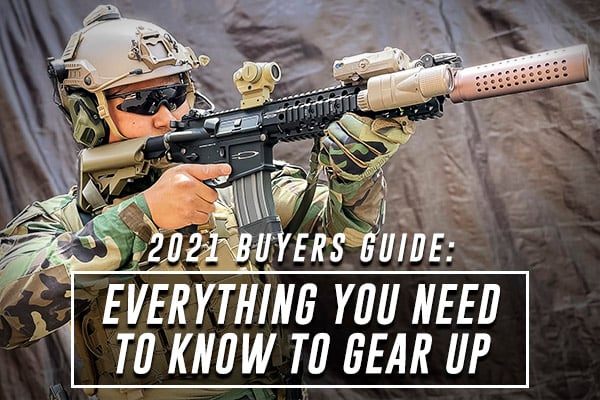
Airsoft guns and tactical gear can be a difficult market to navigate for new or inexperienced players as you try to find the best way to spend your hard earned dollars. Even experienced players can struggle with analysis paralysis trying to navigate the endless ocean that is the airsoft market! Don’t fret, because Airsoft GI is here to help you dominate the competition and pick the best items for your budget!
But First, an Introduction
Your humble airsoft Sherpa in this endeavor is I, Dave. It’s nice to (virtually) meet you. I’ve been playing airsoft for nearly two decades in some form or another, and my journey started like many of you plinking with cheap flea market springers in the backyard as a young kid. I’ve been working in the Airsoft business for over a decade, having done everything from run events, create content for video, and even managed one of the best airsoft stores in Texas.

I firmly believe that knowledge is power, and arming you (pun totally intended) with the right knowledge about gear and equipment is the best way I can help do my part to improve the airsoft hobby for everyone. We’ve packed this guide full of information regarding guns and gear, but rather than just blather on like a car salesman about stats and specific models, we’re going to teach you the same logic and methodology I and my comrades at Airsoft GI use when we build our own loadouts and buy our own gear.
We’ll sprinkle in plenty of products and recommendations for those of you that want it, but we hope you walk away from this guide more knowledgeable and capable of picking the right guns and gear for you!
Table of Contents
If you'd like to jump straight to a specific section, just click the title!
Chapter 1: AEGS (Electric Airsoft Guns)
Chapter 2: Gas Powered Airsoft Guns
Chapter 3: Spring Powered Airsoft Guns ( Coming Soon )
Glossary:
Chapter 1: AEGs (Electric Airsoft Guns)
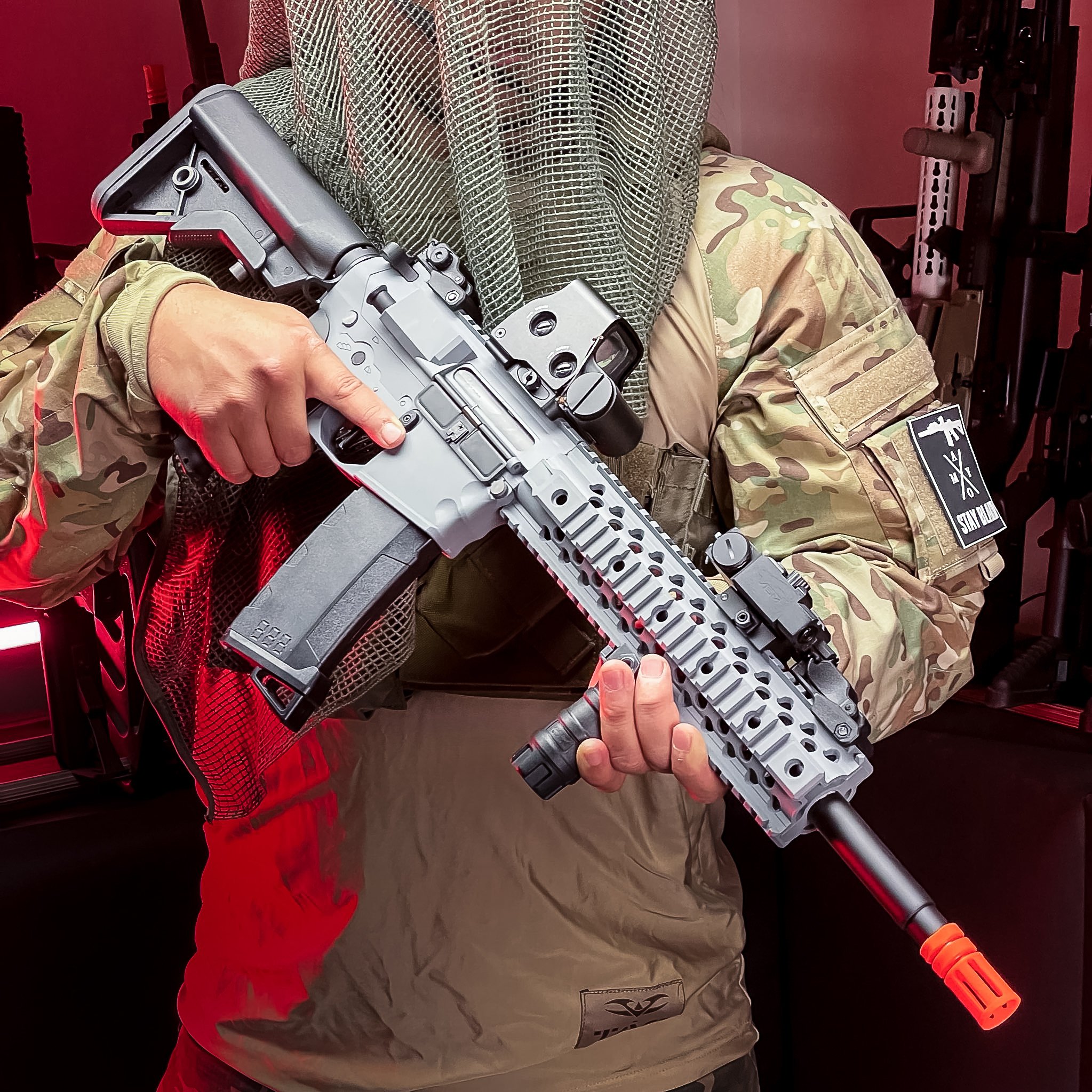
AEGs are one of the most ubiquitous types of airsoft gun on the market. Second to none in their popularity, these guns are battery powered and come in almost any style you might want. They offer unparalleled customization and quality options at a litany of price points so that anyone can get started.
AEGs are so popular because they are functional for almost any need. Whether you want a long range AR pattern built for outdoors, or a close quarters minded short barrel shooter for indoor play, you can find an option. If you play in hot climates, cold climates, or live somewhere where you are lucky enough to get all four seasons and want one gun to rule them all, AEGs do not fall prey to the nasty side effects that weather and temperature can play on other systems, and offer the option for semi-auto and full-auto fire you don’t get with spring guns.
They’ll come in three primary categories based on quality, High End, Mid-Tier, and Entry Level. While they all offer different options for different players; don’t feel like you can only be competitive if you start with a high end rifle instead of an entry level option or a mid tier gun. Each category has their benefits, and the important thing as you read through the information in this guide is to remember that it’s about finding the right rifle for you, not the best possible airsoft gun.
High End AEGS: The Pinnacle of Quality
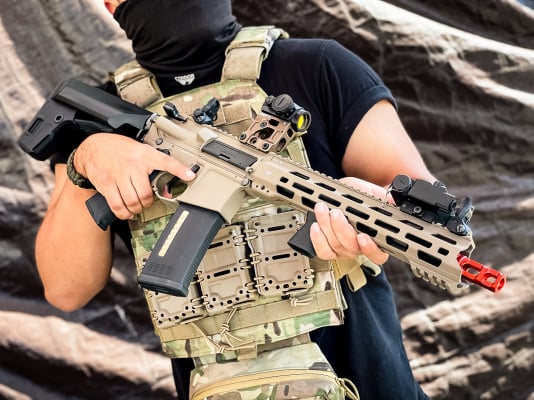
So you want to dip your toes into the endless ocean of high end airsoft guns, do you? We’ve got your six covered with all the things you need to know about high end AEGs. Whether you just want some advanced intel on what to expect as you shop for these behemoths, or need the behind the scenes knowledge on what to look for and what to avoid or just some cool brands to check out, you’ll find it all below!
What to Expect With High End AEGS
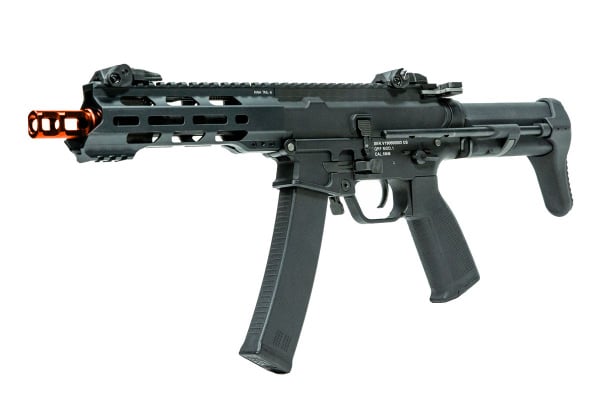
High End AEGS don’t differ as dramatically from their mid tier and entry level cousins as you might expect. They don’t suddenly start sprouting heat-seeking BB’s or force fields to block incoming BBs, but where a mid-tier AEG may only have one or two cool performance or feature notes worth talking about, your high end products typically encompasses the majority of “must haves” in an Airsoft Gun to some degree.
The first thing to expect with High End AEGs is the higher cost. This is an implied part of the buying equation, but it’s still something you need to be prepared for. While we do offer all manner of amazing discounts here at Airsoft GI, you’re still going to need to be prepared to drop some serious coin to get into this ball game. Typical price points for High End AEGs start north of $350 and frequently jump over $400.
The other obvious thing to prepare yourself for is the overall higher quality you’ll find with high end guns, but you need to be aware that sometimes looks can be deceiving. While high end AEGs are often made of metal, feature beefed up internal components and unique features, they aren’t always made equal. Make sure you do your research into what each company bulks up on their products so you get exactly what you want, whether it’s a full metal construction or an innovative trigger control unit.
You should also prepare yourself for the delicate balancing act that is balancing performance features versus proprietary parts. Many high end guns achieve their above average performance by modifying parts and specifications to achieve new levels of accuracy, velocity or to add new features like programmable triggers to your gun. These can affect aftermarket parts plans you may have for your rifle after you purchase it, so you would be well served to do some research ahead of time on parts compatibility, and determine what is important to you.
What To Look For In A High End AEG
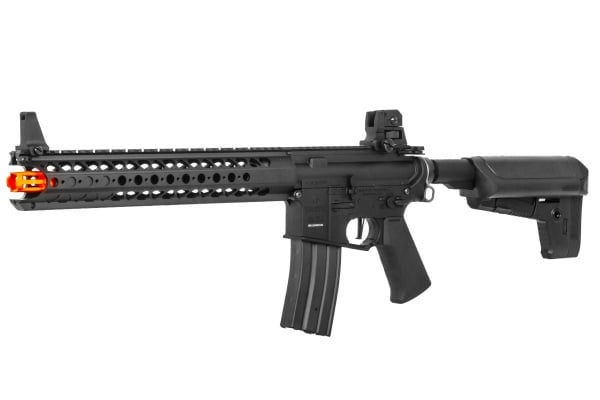
You’ll want to start browsing for your High End AEG with the external quality. A good build starts with sturdy and robust externals to make sure they can accommodate whatever internal components you are adding to the inside. Whether that means a full steel body and real wood furniture for your AK rifle, or the newest in modular handguard tech for your AR pattern rifle, make sure the metals and polymers used to construct your new rifle are up to snuff. A quality manufacturer isn’t afraid to announce the types of metals they use in construction, and the airsoft community is quick to point a bad deal out when they crop up.
Internal performance is the next thing to look out for. While manufacturers rarely list these stats out in practical terms, because it’s nearly impossible to do an all around comprehensive test, there are plenty of great resources to check out. We review plenty of guns on video at the Airsoft GI youtube channel, and you can find written reviews with even more detail at websites like AirsoftRifle.Com for those of you who need a good read. Make sure you take note of things like effective range, accuracy and velocity. Be aware of the field rules and conditions before you shop, so you buy a gun suited to where you’ll be playing.
Lastly, you’ll want to look out for those must-have features! Do you want to have a programmable fire selector? What about an included tight bore barrel and rotary hop up? This is the stage of the research process where you make sure that the guns you are looking at have the things you need. If variable FPS is important to you, make sure you check out a gun with a quick change spring, or an easily adjustable spring guide. If you want the option for burst fire, make sure the guns you are looking at contain an ETU or programmable mosfet of some kind, just be aware that it may affect your upgrade options.
What To Avoid With High End AEGs
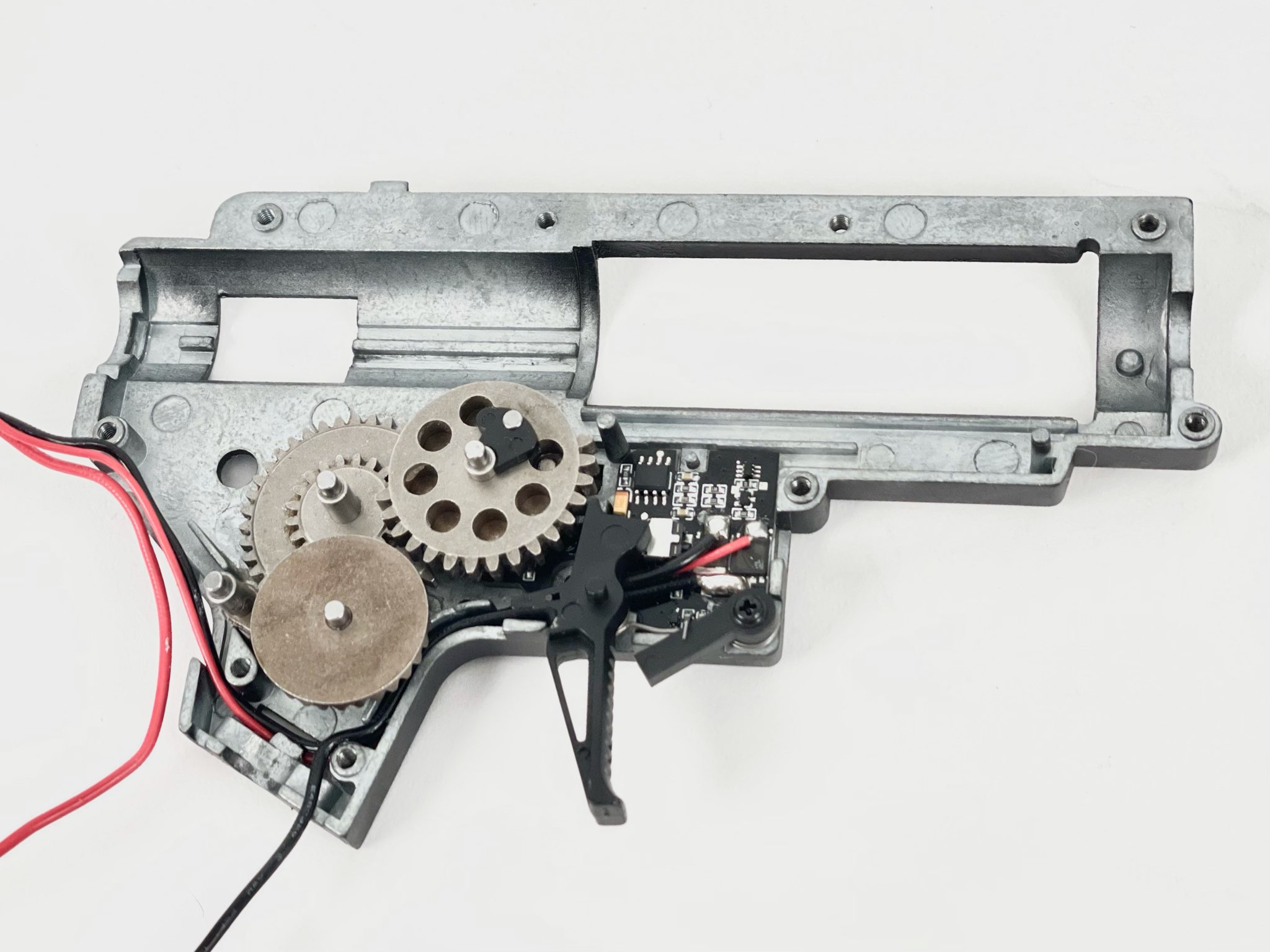
Just like you have things to look for in high end guns, there are some deceiving things you should stay away from. The first thing to watch out for is going to be cheap metal. While most high end guns will be a safe bet for quality materials, there are some guns that pop up on the market touting fancy licenses and “metal” construction, but won’t say what kind. That’s the kind of red flag you want to watch out for. Be aware of cheap plastics and faux wood on high end guns as well. None of these are a deal breaker inherently, but you need to be aware before you buy, so you don’t overpay.
Just like cheap metals, you need to watch out for cheap electronics as well. Not all ETU’s and mosfets are created equal. This is where checking out reviews online can help out a ton to find the guns that have a history of electronics failures or wiring issues. Look for manufacturers with a high pedigree for quality electronics. This is getting easier to find as companies recognize the importance of good quality assurance in the industry, but you should still be wary.
The last thing to be cautious of is less about the guns themselves, and more about you as a buyer. That is being cautious of compromising your upgradability needs. We’ve brought this up multiple times now, but one of the biggest changes you’ll see from high end aegs compared to other electric rifles is the existence of fancified parts and modified specs to achieve the higher levels of performance. This isn’t explicitly bad, but make sure you avoid settling on whatever plans you have for your build when you are buying. If you’re not going to modify the gun in any significant way, then this is a moot point, but if you plan on modifying things like triggers, gears, barrels, and hop ups make sure your new gun is going to be compatible before you buy.
Brands To Check Out
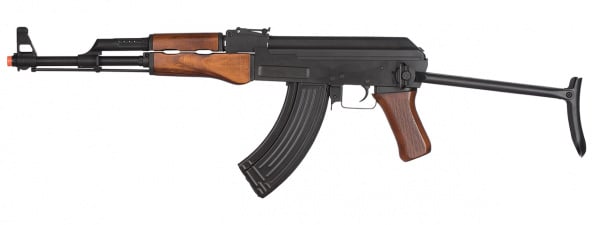
We’ve been careful to avoid specific brands until now. Illustrating the whys and why nots of buying certain types of guns isn’t brand specific, However, it wouldn’t be a buyers guide if we didn’t give you a good place to start looking for products in this genre of airsoft gun.
Our first brand to highlight is Krytac. While they haven’t updated their internals or electronics in a few years (as of writing this guide) they have a reputation for exceptional performance. The rifles Krytac puts out often end up in top 5 lists around the hobby for being high quality blasters capable of consistent velocity and accuracy at range. This comes at the cost of very proprietary internal components that require heavy modification to work around. Krytacs are high quality, but definitely for the “bought not built” crowd.
Up next we have Classic Army, and specifically, their Nemesis series of airsoft guns. These high end airsoft guns feature the rugged construction you want in a high end gun, feature tightbore barrels out of the box (and they are upgradeable if you want even tighter bore diameters) and an excellent ETU system in the trigger. While this means you can’t easily swap the trigger, it gives you all the options you want in a programmable trigger with great reliability.
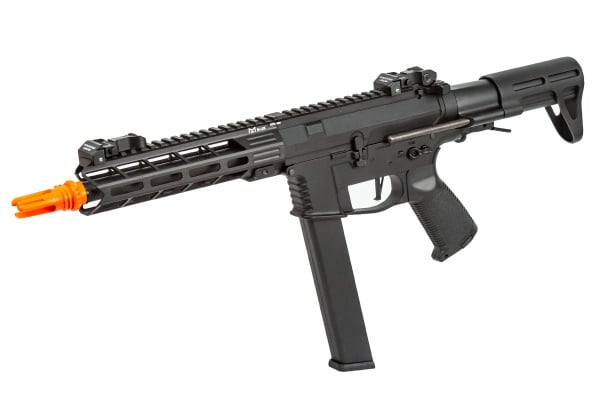
KWA also makes its mark as a manufacturer of primarily high end guns. While they recently began dipping into mid-tier, KWA is a brand known for high quality BB blasters. Their Ronin series of guns all feature either KWA’s version 2.5 or 3.0 gearboxes, giving you options for recoil and adjustable FPS, but they do so in a way that allows you to modify all of the important performance parts of the gun like the trigger, piston, gears and barrel assembly.
VFC holds a place of special critical acclaim in the high end AEG market for being one of the most internally modifiable rifles you can find with full metal externals. VFC rifles like the Avalon series and the Samurai Edge are all high quality rifles built to be customized by their owners into exactly the kind of airsoft gun you need.
For the AK diehards out there in the airsoft hobby, we have to talk about LCT. LCT is a manufacturer known for making what may be the best AK platform rifles in the business. They use steel construction, real wood, and the highest quality polymers to manufacture their Kalashnikov replicas, all of which are built like tanks. While they lack a lot of the creature comfort features of high end AR brands, they benefit from a healthy aftermarket and plenty of options for customization.
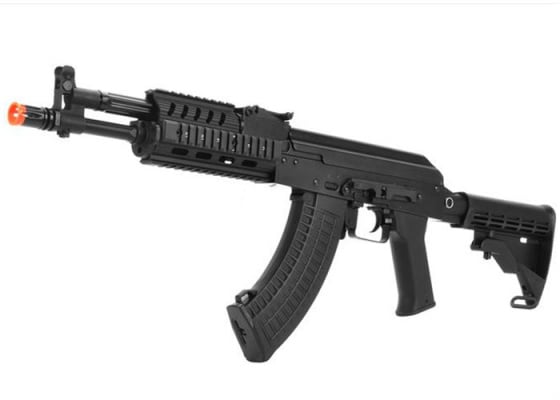
Lastly, we’d be remiss if we do not mention Tokyo Marui as the original high end guitar. TM has to manufacture with a lot more plastics than most manufacturers due to Japanese law, and they are hard to get in the USA, even with lower velocity, the rest of the performance you get out of their guitars is second to none and they are the standard everyone else copies, so you know parts will be available. We’d recommend checking out their newest NGRS recoil shock rifles.
Dive In Head First
The high end spectrum of Airsoft AEGs is literally endless, with new models coming out all the time. Armed with the advice above, you should have no trouble acquiring exactly the type of rifle you’re after, whether it’s an AK, an AR or something more exotic. Just remember to be mindful of the things you want out of an airsoft gun this expensive. You’re dropping a hefty chunk of change on something in this category, and you deserve to get exactly what you want. Remember, Airsoft is all about fun, and ultimately, picking the right gun for you is better than trying to chase the farce that is picking the best gun. There's no such thing as the "best airsoft gun" just the best gun for you.
Mid Tier AEGS: Airsofting Above Average
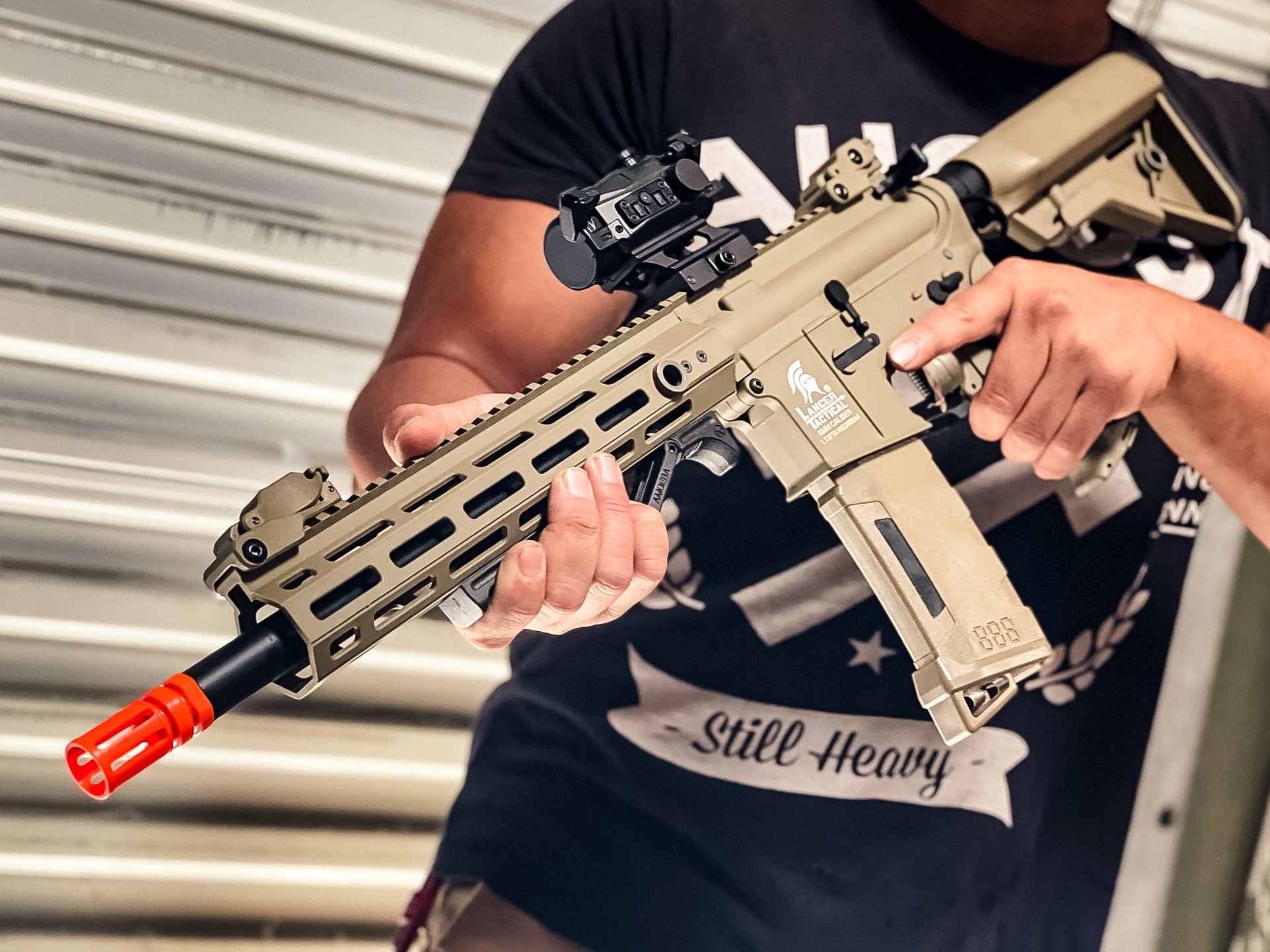
Are you the type of player that didn’t want to drop massive coin on a high end AEG, but the items available in the entry level bracket didn’t get your Neodymium motor running? That’s what the Mid-Tier is for! These AEGs are built with performance in mind, but you’ll find they cut out some of the more ostentatious features of the high end AEGs or avoid costly licensing to help save you money and give you an Airsoft Gun worth owning!
What to Expect With a Mid Tier AEG
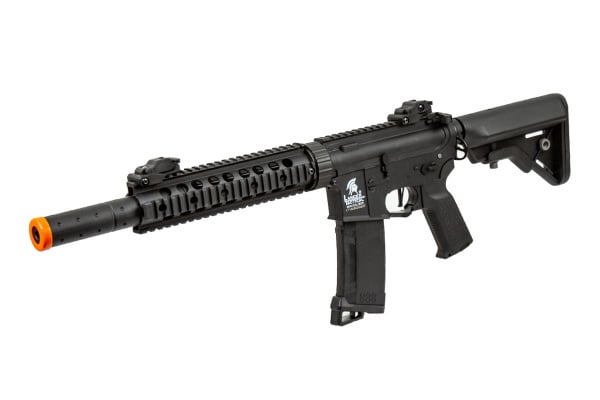
Mid Tier AEGs, just like their more expensive brethren have some pros and cons to be aware of before you get into looking at specific guns. The first and most obvious of these is going to be a higher cost than entry level rifles. This is implied by their placement in the mid-tier, but it often comes as a sticker shock to many buyers. Most mid-tier guns come from the same manufacturers as entry level, but bumped up a bit with better performance and construction, and that doesn’t come for free.
The second thing to remember is that because these aren’t the highest grade of airsoft gun, they aren’t going to shoot like it either. You’ll find that Mid-tier AEGs have come a long way, and many will absolutely hold their own in a firefight against a more expensive rifle, but you may be just a bit behind in the accuracy or consistency compared to more expensive guns. With all that said however, they aren’t so far behind that you can’t make up for it with a bit more player skill and good positioning.
The last thing to prepare yourself for, especially if you’re moving from entry level guns, is that mid-tier guns frequently don’t include the pack-in items you may have become accustomed to with entry level fare. This means you’ll be footing the bill for your battery and charger setup, accessories, and other items you may find typically included. Many mid-tier guns have also started to include Midcap magazines as well, and you’ll need a speed loader that often isn’t included to be able to use them. Do your due diligence on what is included, and make sure you get everything you need!
What to Look For In a Mid Tier AEG
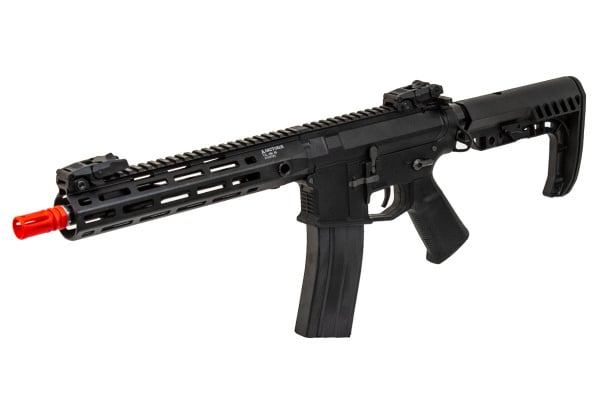
There are a few areas that you can expect to be upgraded in a mid-tier AEG and one of those is the external quality. If it’s in the mid tier price, and the body is cheap ABS plastic, that’s a good sign that corners were cut elsewhere and you should stay away. However, polymer bodies are becoming more and more common, and increasingly high quality, so don’t be afraid to choose those over metal, especially if the style is the right fit for you.
Mid-Tier AEGs should also give you a performance boost in comparison to entry level AEGs. While they may not quite crest the peak of what a high end AEG is capable of, a mid-tier AEG worth owning typically performs well above an entry level AEG. Many include tight bore barrels and upgraded hop ups for better accuracy, and most will include a significantly more robustly constructed gearbox for longevity and consistency. Make sure that your future gun meets the performance marks you need it to before you buy.
The last thing to look for is feature sets. While they don’t tend to have everything you see in a high end AEG, most mid tier rifles will usually include something worth comparing to the competition. This could be things like the included upgrade parts found in Lancer Gen3’s, or a fancy MOSFET to give you burst fire options like you’ll see in G&G rifles. Don’t forget that those fancy features can make a gun less upgradeable, so sometimes the best feature set is to have a standard well constructed gearbox. Know what you want going in, and buy the rifle that meets those needs.
What To Avoid With Mid-Tier guns
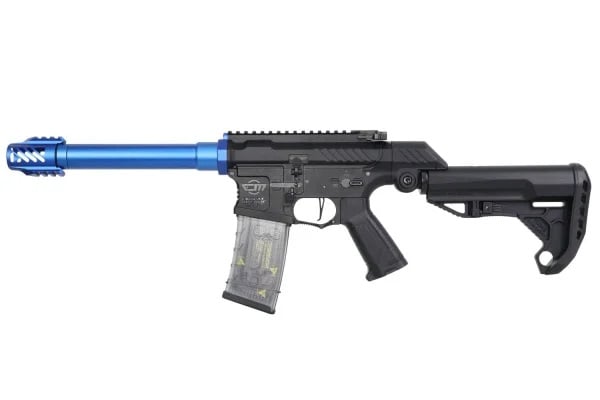
You can’t have pros without cons, and mid tier AEGs are no expection. Many mid-tier offerings from entry level companies simply add a metal body to their polymer entry level offerings, but this comes with some risk. Not all metal bodies are created equal, and you should look out for guns that have a history of external failure. Look for those common threads as you read reviews, and see if multiple reviewers complain about cheap metal or a lot of flex, especially if the manufacturer doesn’t advertise the material it’s made from.
You’ll also want to watch out for substandard performance. While in general, mid tier guns are a better performer that’s not universally the case. The weirder your style gets, be it AK, G36 or some other strange European style of rifle, you run a higher risk of paying for style and not for performance. If that’s a sacrifice you’re willing to make, that’s ok, just be aware of it going in.
Performance leads us into our final thing to watch out for, and that’s paying exclusively for branding. Trademarks are cool. Realistic guns are cool too. Just don’t let looks alone sway you into buying a big hunk of junk with a paperweight for a gearbox. Licensing a firearms brand doesn’t come cheap, and while not explicitly true, most entry level and mid tier guns suffer in some other regard to recoup the cost of the branding.
Brands to Check Out
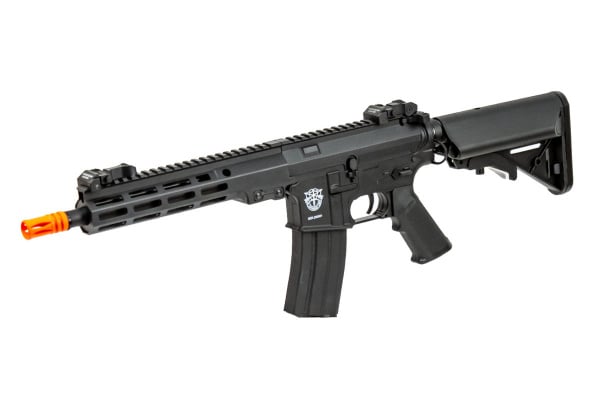
First up is Arcturus, a newer brand that exemplifies everything we’ve said about mid tier guns. These guns can dip into the high end market a bit as well, but we specifically want to highlight their Nylon body series, signified with the NY at the front of their model names. These guns feature a mix of polymer receivers and metal hand guards, unbeatable performance, and a reliable MOSFET that will absolutely go the distance.
Our next brand to highlight is Lancer Tactical, with their new Gen3 line of rifles. While many Lancer Tactical guns definitely exist in the entry level zone, the Gen3 lines knock it out of the park. Built in tight bore barrels, a programmable Electronic Trigger Unit from Zion Arms, and incredible polymer bodies give you high end performance in a budget friendly package.
Classic Army Skirmish guns also make this list for being another great example of premium features without breaking the bank. The Classic Army Skirmish series includes their Nemesis ETU for programmable select fire options, and some of the fastest trigger response in a gun of this price. Polymer externals are rugged and ridgid, giving you the kind of stability and sturdiness you expect out of a metal bodied rifle.
ASG also offers a handful of models in the mid tier arena. Most people know ASG for their scorpion Evo line, but we’d like to highlight the M15. OEM’d by Classic Army, it has all the same features you love about those skirmish series rifles, but this also includes some slick Armalite trademarks for extra authenticity.
In the realm of weird guns, we’d like to point out Echo 1. We’ll cover more of their options when we get to the entry level rifles, but they have some notable stand outs in the middle tier, especially for non-M4 rifles. The ER-25k is a great standout DMR for those of you looking for a long range platform, while the full metal AK’s they offer can be a fantastic choice for AK shooters wanting to stand out a bit more.
The KWA Eve gets a notable mention here as well. While we spoke about KWA during the high end AEGs, KWA has brought that same pedigree to the mid tier market with the EVE. Featuring the same Version 2.5 gearbox found in their ronin line, but utilizing a majority polymer construction designed to be extremely modular, the EVE is a fantastic option for players looking for something a bit left of center.
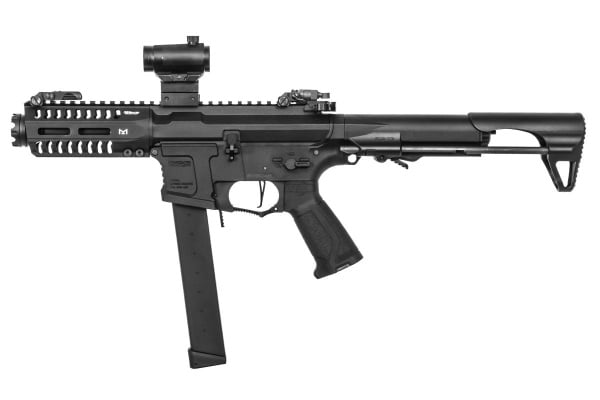
The Mid Tier market is also so saturated with guns that we have some honorable mentions to get through. Each of these guns is a very solid popular contender, but might be a bit more expensive than we’d like, in spite of other good features that still make it worth a look.
- G&G Combat Machine 2.0 Series AEGs
- G&G ARP9 smg
- G&G SSG1 Rifle
- Echo 1 N4 Rifle
- Echo 1 Troy Series AEGS
- Elite Force Competition Series AEGS
Get The Best Of Both Worlds
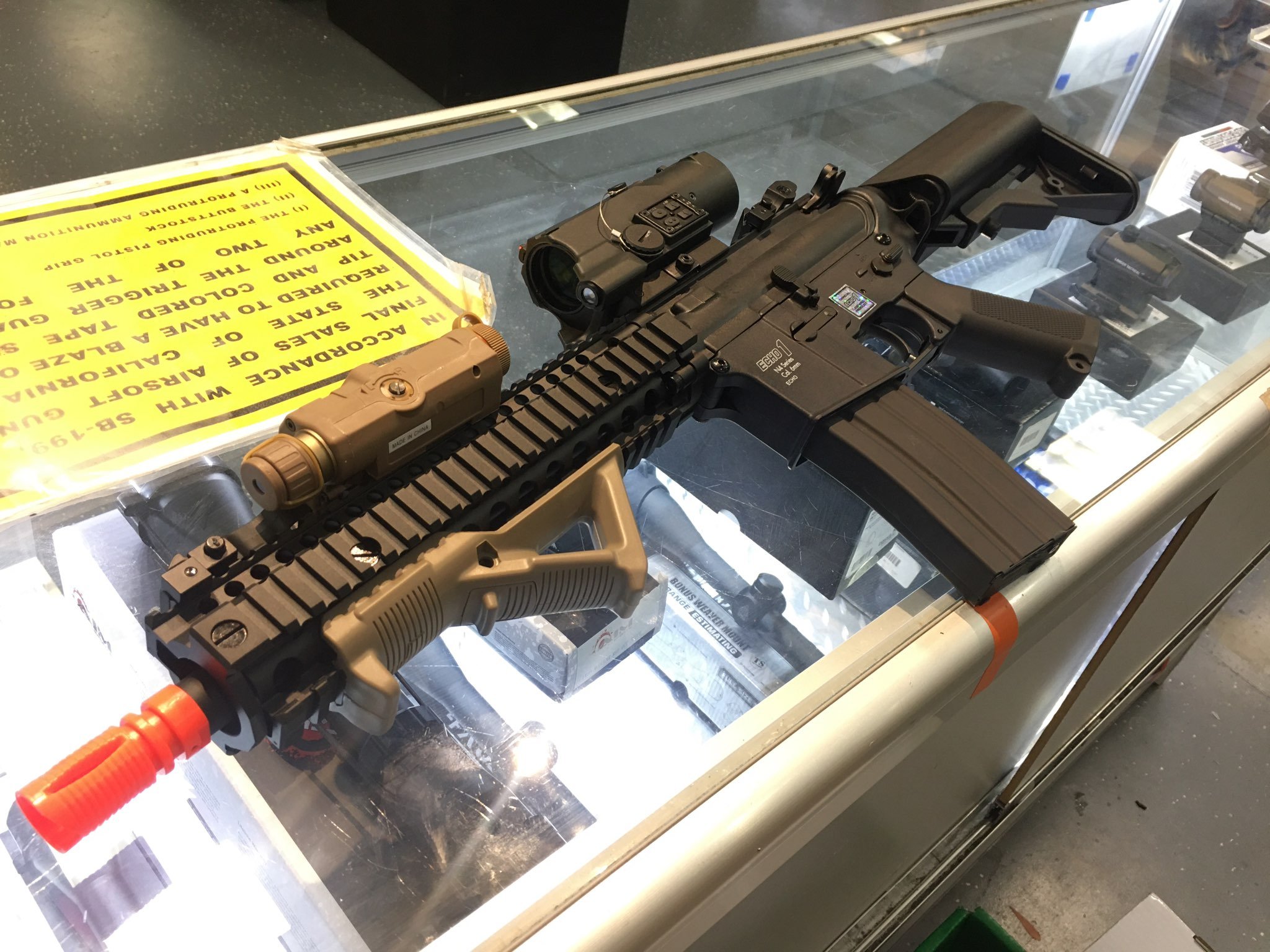
Mid Tier AEGs give you the benefits of a high end gun, but closer to the price point of entry level. We see many new players with a bigger budget gravitate to this sector of the AEG market to get a jump on stepping up their game. Better performance and quality isn’t necessary to play, but it will help increase your enjoyment as you play more often.
Entry Level AEGs: Built For Beginners and that’s Not a Bad Thing
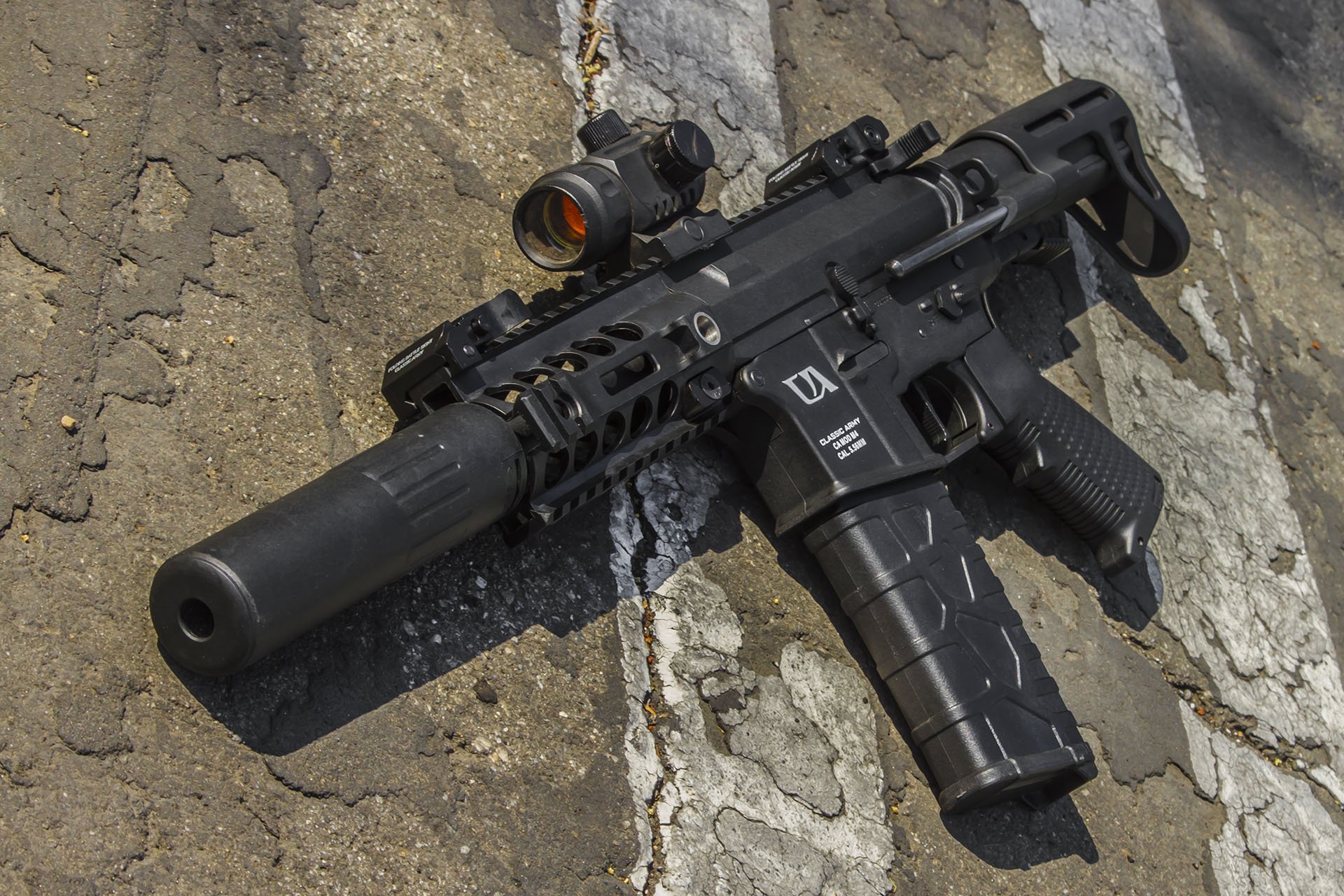
We’ve covered the rest of the spectrum, but what about those of you who don’t want to commit that much money to starting your airsoft journey?
Don’t worry, because the market has exploded in the last few years to provide an astronomical amount of options packed with value and performance to make sure even the newbies have a good time! Whether you’re looking for a first gun, or an inexpensive back up, there are plenty of options to whet your whistle.
What to Expect With Entry Level AEGs
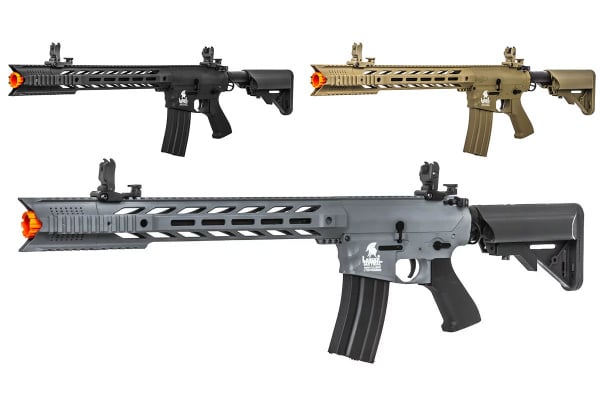
Just like the other two main categories of AEGs, there are certain expectations you should have going in. When browsing for entry level guns, the obvious differentiator is the lower cost compared to mid tier and high end AEGs. Entry level guns tend to be considerably less expensive than the other two groupings so don’t be surprised when you see those less heart-attack-inducing price tags. The secret is to know which guns are worth the money you’re still paying, because not all guns are made equal.
You’ll be primarily choosing between two main facets when picking an entry level AEG. That balance is struck between aesthetics and performance. Whether you want the coolest looking airsoft gun, or the highest performance for your dollar, neither option is inherently wrong but you should know what you want going in. The weirder the gun style, or the more customized it comes out of the box; the less likely you are to get a high performance gun as well in the entry level market. This can usually be overcome with upgrades in either case, so you just have to ask yourself which option is more important up front. Again, neither one is a bad choice; you should choose what makes you happy, especially if you’re just starting out.
Entry level guns will also try to earn your purchase with flashy pack-in items in the box. Much like deciding between looks and performance, this doesn’t always have to be a red flag but it shouldn’t be the deal breaker for you either. Often times, these accessories are things like cheap fore grips or red dot optics that don’t stand the test of time, and you’ll end up replacing them anyway. These accessories aren’t really essential to playing and enjoying the game. Other times, you’ll find that an entry level gun includes a battery and charger, and if you’re trying to get started on a strict budget, this can be a huge value-added proposition. You just need to plan to replace the charger quickly. They are rarely ever a smart charger.
What To Avoid With Entry Level Guns
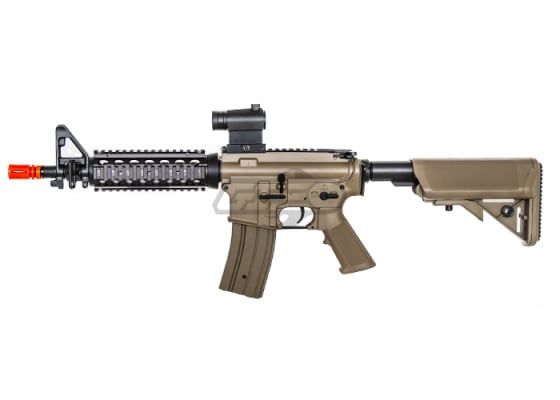
You’ll want to first and foremost be concerned with cheap construction. While there’s no hard and fast rule about metal versus plastic, quality of each can vary company to company. Stay away from ABS plastic bodies, and be wary of companies in this price bracket that advertise full metal, but won’t tell you what that metal is. It is often recycled alloy and prone to breaks, which means the nylon polymer bodies tend to last longer.
This can also apply to internal construction as well. Make sure whatever you are buying has a full metal gearbox, and take note of any parts advertised as being more robust. Cross reference that with the information you find in reviews as you research each model, and you’ll quickly locate the guns that contain gearboxes worth your time in both performance and durability. We’d recommend striving for a more reliability driven gearbox if this is your first gun as well.
Lastly, don’t get suckered into a bad gun just because the pack-in items happen to be particularly cool. While we touched on this earlier, it’s an important enough point to harp on a second time. Foregrips and accessories are awesome, but you can always source those items later, and the ones you buy aftermarket are almost always universally better. Make sure the gun you are purchasing with those extras is worth the dollar value being paid first, and the extra items are just that: extra.
Brands to Check Out
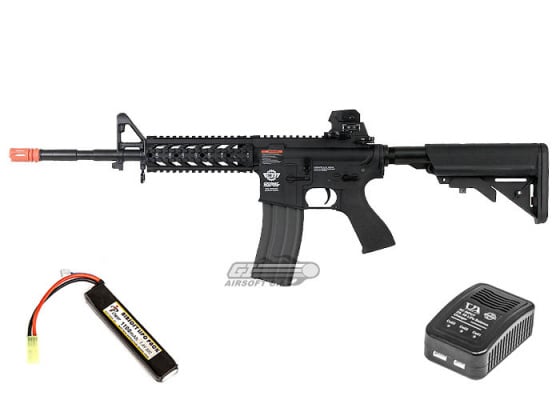
Just like we did with our other two AEG guides, we have some recommendations on where to start looking. These are brands we have found to meet all of the criteria we outlined above and can be great choices for new players.
Lancer Tactical has what is likely the largest selection of high quality entry level rifles in their Gen 2 series. While they have released the Gen 3, the Gen 2 rifles are still plentiful in 2024, and come in at a lower price point. The Nylon body standard line guns even include some great extra items in the form of a quality charger and battery you won’t need to replace immediately. They don’t have the fancy features of the new Gen3 rifles, but they maintain the same high performance and come in a myriad of styles to fit your fancy.
Echo 1 has been making high quality entry level guns for a long time. One of the first AEGs I ever purchased was a G36 from Echo 1 back when you could still find them, and it served me very well. While that model is discontinued, Echo 1 has a wonderful series of beginner friendly AK’s in their red star line, and are a go-to option for players looking for something a little less American in style.
G&G is practically a household name when it comes to entry level guns. Endless threads appear on reddit and Facebook recommending the often imitated but never replicated Combat Machine series. G&G combat machines have steadily improved over the years in performance, but what they are really known for is their reliability. If you want to purchase an airsoft gun that will withstand all the drops and dings that come from learning this game, the combat machine will keep coming back for more.
No Better Time To Start Than Now
The important take away here is to understand that low cost doesn’t mean low power. These guns are simply intended for helping players that don’t want to spend a staggering amount of money get into the airsoft hobby. While you will have to make some compromises compared to spending more money, as long as you know what the most important parts of the puzzle are you’ll find a gun that’ll keep you competitive.
Chapter 2: Gas Blowback Airsoft Guns
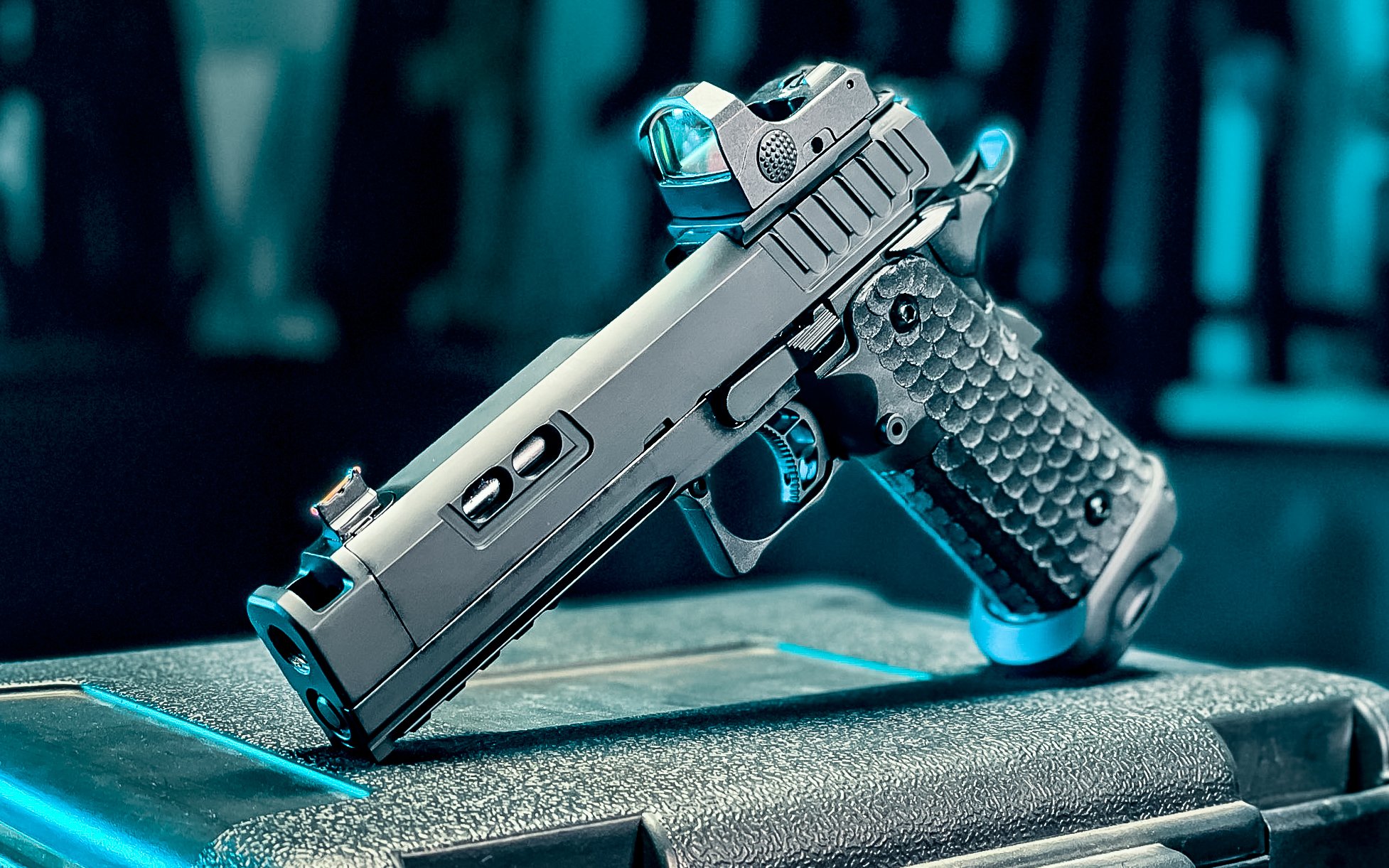
There’s a gun for every player on the market, and gas guns are no different. When you want uncompromising realism in both the shot to shot feel of your airsoft gun as well as the manual of arms, you simply cannot beat the gas. They operate in the closest manner we’ve found in the airsoft world to a combustion firearm, and that is the primary draw of gas powered airsoft for most users.
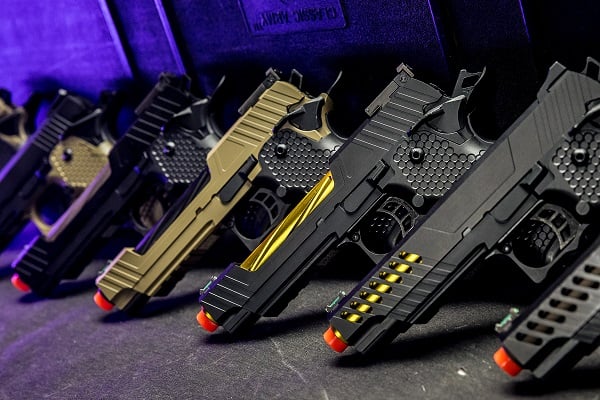
You’ll find them in handguns, rifles, sniper rifles and while uncommon gas blowback machine guns have even been made too! While gas pistols are the most ubiquitous, we’re seeing a rise in gas rifles as well with the KWA LM4 and the Marui MWS systems both in production in 2021.
The reason you want to add a gas gun to your arsenal is because of that uncanny realism to the whole experience. Reloads, racking the slide or charging handle, fixing malfunctions and operating the gun are all near identical to the real thing. In the case of pistols, you’ll find gas guns provide a level of performance you simply can’t get out of an electric platform that small. When you want the most immersive realistic experience whether for training or for gameplay, gas is the best option!
A note on non-blowback gas guns
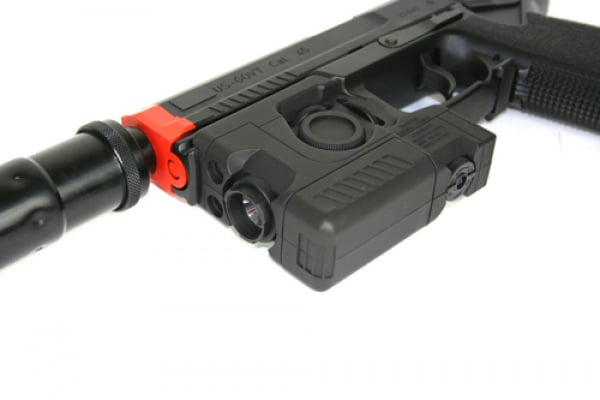
While we won’t delve into depth on non-blowback gas guns here in this buyers guide, they do exist and you should be aware of them. The popularity of non-blowback style gas guns has definitely crashed in 2024, but a couple of stand-out models exist and can be considered worth your money. Follow the advice for buying blowback guns, and just know going in that you won’t have the same realistic experience, and you’ve got all the tools you need to pick the right pistol.
Gas Blowback Pistols: Handheld Excellence
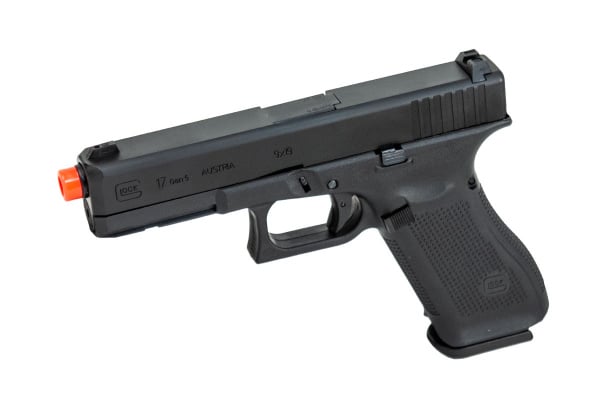
The humble pistol is an oft overlooked part of many airsofter’s kit. While it’s often relegated to the role of “backup” when you need to reach for your sidearm you cannot afford any compromises. The sheer power gas is able to deliver in such a small package is one of the most important reasons players go this route for their pistol preferences. Whether green gas or CO2, there are a whole host of features to look at in terms of which hand gun is best.
Types of Gas
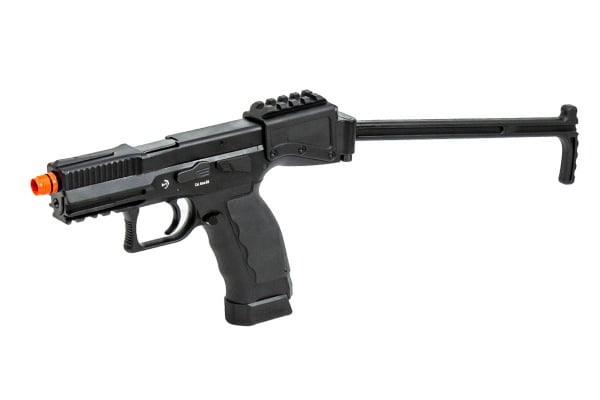
There are two main contenders for gas types when it comes to pistols. Green gas provides the most options when it comes to gas pistols, and tends to favor the majority of climates in the Airsofting world. Green gas is essentially a propane-adjacent gas with silicone lubricant mixed in. This means it is flammable, but not explosive, and as long as you store it safely you’ll never have an issue. This gas has it’s biggest benefit in assisting with part lubrication as you play, and while it doesn’t remove the need to clean and maintain your guns, it can help extend the lifespan of your pistol.
CO2 is the other primary gas you’ll find in use with most pistols. CO2 is exactly what you think, pressurized carbon dioxide. It’s the same tiny 12 gram jets you’ve seen in paintball and air guns for years, but in an airsoft gun this time. Power is the primary component here, as CO2 delivers a much more violent reaction when it expands. It fights temperature shifts very well too, making it much more consistent in colder temps; an important thing to consider if you live in a colder climate.

So which gas should you pick? That should depend primarily on your climate. If green gas is an option, you’ll have more choices to choose from. If your local weather leaves you cold more often than not, especially below the 50 degrees Fahrenheit that green gas struggles under, you’ll want CO2. Keep in mind that parts availability for CO2 magazines is also a little harder to come by for CO2 magazines than it is for Marui-spec green gas magazines. If you can find parts at all, you’ll find them in parts kits containing things you may not need, and they’re usually only OEM parts, not upgrades.
Ultimately, if it’s not going to be a huge factor, we recommend choosing style based on the gun that fits you best (more on that in a bit) as that’s going to determine how well you can perform with the pistol more than the type of gas being used. It can be important in fringe cases, but more often than not, either gas is sufficient.
What To Look For In A Gas Pistol
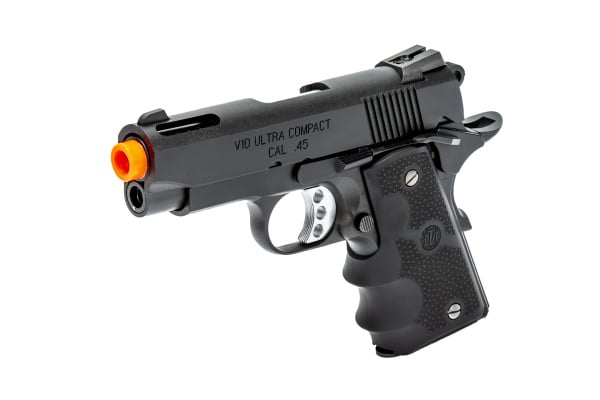
When buying a new airsoft pistol, the first thing you want to look at is the construction. Movement in a blowback pistol is significantly more violent in nature, and you’ll see the downsides of shoddy construction much more quickly than you will in an AEG. While full metal isn’t a huge issue, as even modern firearms are made with polymer, you’re going to want metal slides, and when possible, steel internal components. Make sure your pistol can handle the abuse you throw at it, because while you may shoot it less than your rifle, each shot has a way harsher effect on the whole system.
Internal performance is important as well. While most pistols will perform well beyond what you’ll be using them for, making sure you can get shots off quickly and accurately is still important. Make sure the pistol you look at buying is going to be capable of putting bb’s where you aim it, and that it can hold plenty of gas in the magazine to get you through a game. That way, when you miss, you’ll know it’s because you need to improve, not your gun.
This is a good time to stress the importance of upgradeability. Many pistols are every bit as upgradeable as the AEG you already own, and this means that performance can be adjusted to your liking if need be. Don’t be afraid of that aspect of the hobby either, working on gas pistols is in many ways easier than AEGs, especially if you are already a little familiar with traditional firearms.
Lastly, we’d like to touch on sizing. Grip size is the most important part of this equation, making sure the gun fits in your hand, but also the overall size of your pistol. Just like the real thing, airsoft pistols come in many shapes and sizes. You’ll want to pick the right frame size for what you are doing, and make sure you can comfortably hold it. If the pistol isn’t comfortable, you aren’t going to want to use it when you need it, and it will affect your personal ability to shoot it well. Make sure you can reach the controls, and that they fit with your play style. Take note of things like magazine release type and location, and whether or not the grip is ergonomic. Here’s where it really helps to get your hands on the real thing, but you can make some informed judgments about what you like. Failing access to in person touching of guns, you can always lean on experience shooting real firearms as well, as replicas tend to be extremely close to the size and feel of their firearms counterparts.
What To Avoid
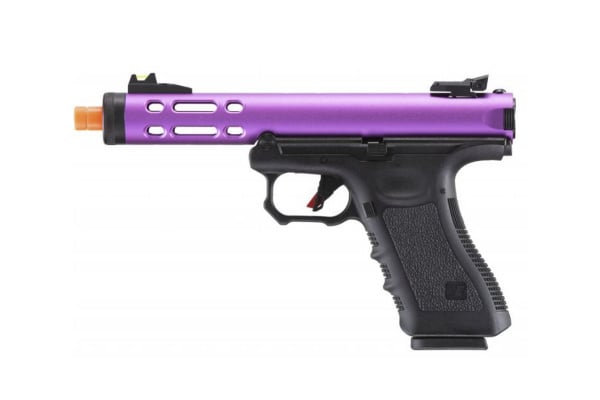
First things first, stay away from all-plastic pistols (Tokyo Marui guns are the lone exception here). As we discussed earlier, they just aren’t going to cut it long term due the violent action of blowback pistols. When checking reviews; watch out for weak internal components as well. The cheap recycled pot metal you want to avoid with AEGs is also a common construction material in pistol internals and it has all the same pitfalls here too. It’s cheap, it breaks easily, and it can cause catastrophic failures if not addressed. If possible stick to pistols using steel and high grade polymers.
Watch out for pistols that just don’t meet the mark on performance either. Guns with poor gas efficiency, or terrible hop up systems should be avoided at all costs. It’s hard enough to shoot straight in a high stress close quarters situation, you don’t need your pistol making it worse for you. Your pistol doesn’t need to shoot as far as a sniper rifle, but make sure it can shoot straight past 50 to 60 feet, as that’s where you’ll need it most. Pay close attention to FPS, especially with CO2 pistols as well. Many fields have hard limits on the power of the pistol style airsoft guns, and CO2 pistols are more likely to blow that limit due to their power.
Lastly, check for availability for accessories. Whether its holsters or magazines, make sure the pistol you want has those items available for purchase. Nothing is worse than having a wicked cool airsoft gun with no way to reload in the field or holster it on your person. If there are any other accessories you have to have for your side arm, like a slide mounted red dot or flashlight, make sure you can easily source those too, so you can get everything you need in time for your next game.
Brands To Check Out
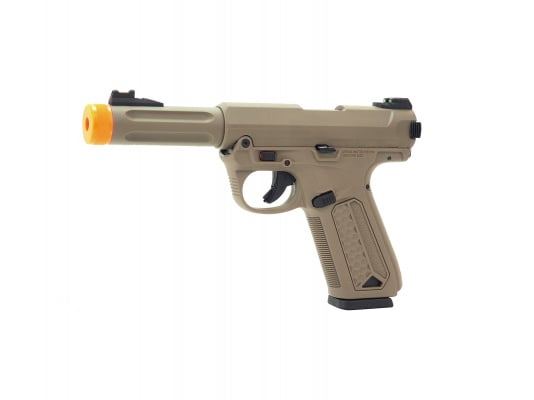
There are so many options in the gas pistol market, being one of the oldest types of airsoft gun around, so here’s a list of brands worth the money to start your airsoft journey.
Tokyo Marui is the grandfather of airsoft for a reason, and it started with their legendary Hi-capa line. In 2024, TM makes a variant of almost every type of pistol in the firearms world today. They are famed for their legendary performance and reliability capable of hitting ranges most companies only dream of, despite their primarily plastic construction. Don't let that scare you though, TM plastics are some of the best in the industry, and aftermarket parts kits are plentiful for most models if you ever wish to go full metal. TM also has such a legendary reputation that aftermarket support is almost guaranteed for every model they release.
JAG Arms from Jag Precision has a plentiful assortment of quality Hi-capa style pistols to choose from. Whether you prefer the more well known John Wick-esque style of the TTI Combat master, or a little less ostentatious pistol like the GMX series, JAG has what you want. They also help distribute the Echo 1 line of TAP Pistols that we absolutely love.
Army Armament crushes the hi-capa game as well, with the R501, R603, and R604 pistols. They also OEM the Lancer Tactical Knightshade, which is definitely one of the louder looking pistols you’ll see, but it’s bite matches its bark. Any of these would be a stellar addition to your arsenal.
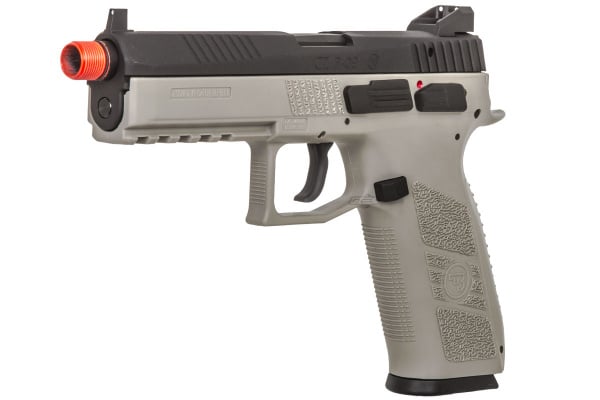
ASG makes an appearance for their CZ line of pistols. These pistols offer the ability to utilize both CO2 and Green Gas simply by switching a magazine, which is an unbelievable asset when you live somewhere that gets actual seasons. If that weren’t a big enough feature, they also shoot very well and are a favored choice for CQB and MILSIM users alike.
No pistol list would be complete without KWA. KWA made their name in the pistol market with legendary recreations of the 1911, the ATP, and Licensed HK pistols for Elite Force. They are still just as great as they have ever been.
VFC and Elite Force also hold a lofty place in this list. We’ve grouped them together because VFC’s best offerings are pistols made under license agreements with Elite Force (similar to the HK models KWA made in the past). These include the venerable GLOCK models and the Walther PPQ as well as the HK45CT. All of these Elite Force pistols feature VFC’s pedigree for high quality and exceptional performance. If you fancy other styles, check out the M17 that VFC produces for Sig as well.
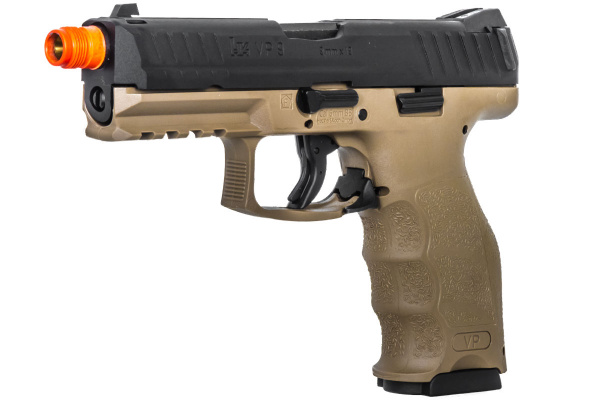
We Tech also make a home on this list for the sheer variety of options available. While not the highest performing options we’ve debuted in this list, they are more than capable in the field, and reliability and performance get better with every release. If you can’t find a model you want with one of these other companies, chances are WE probably makes it.
Lastly, we have to acknowledge the phenomenon that is the Action Army AAP-01 in 2024. It’s one of the hottest pistols this year, but already has an astounding amount of parts support, whether you want your pistol to look like a power drill, or a gundam blaster. Upgrade parts abound, and it is compatible with so many types of G-series magazines that you’l never struggle to locate mags.
Guns Hot
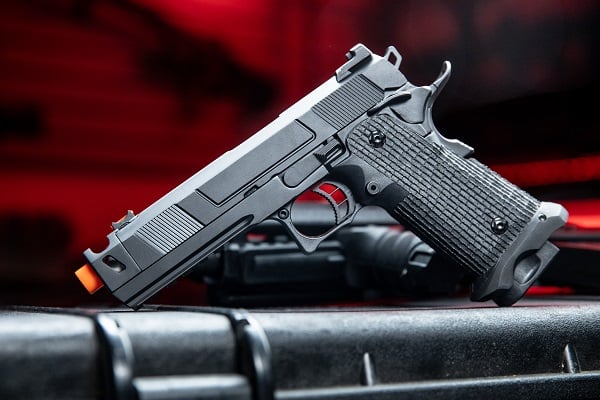
The sheer breadth of options present in the gas pistol world means that you can never truly cover it all; however this should give you a good place to start. Whether you want a Glock, a 1911, or something a little less standard to complete your kit all of the advice above should help you make sure you pick the correct gun for you. Remember that the gas type is secondary to making sure the pistol is comfortable and easy for you to shoot, and that it’s constructed out of quality material, and you’ll have everything you need to dominate CQB.
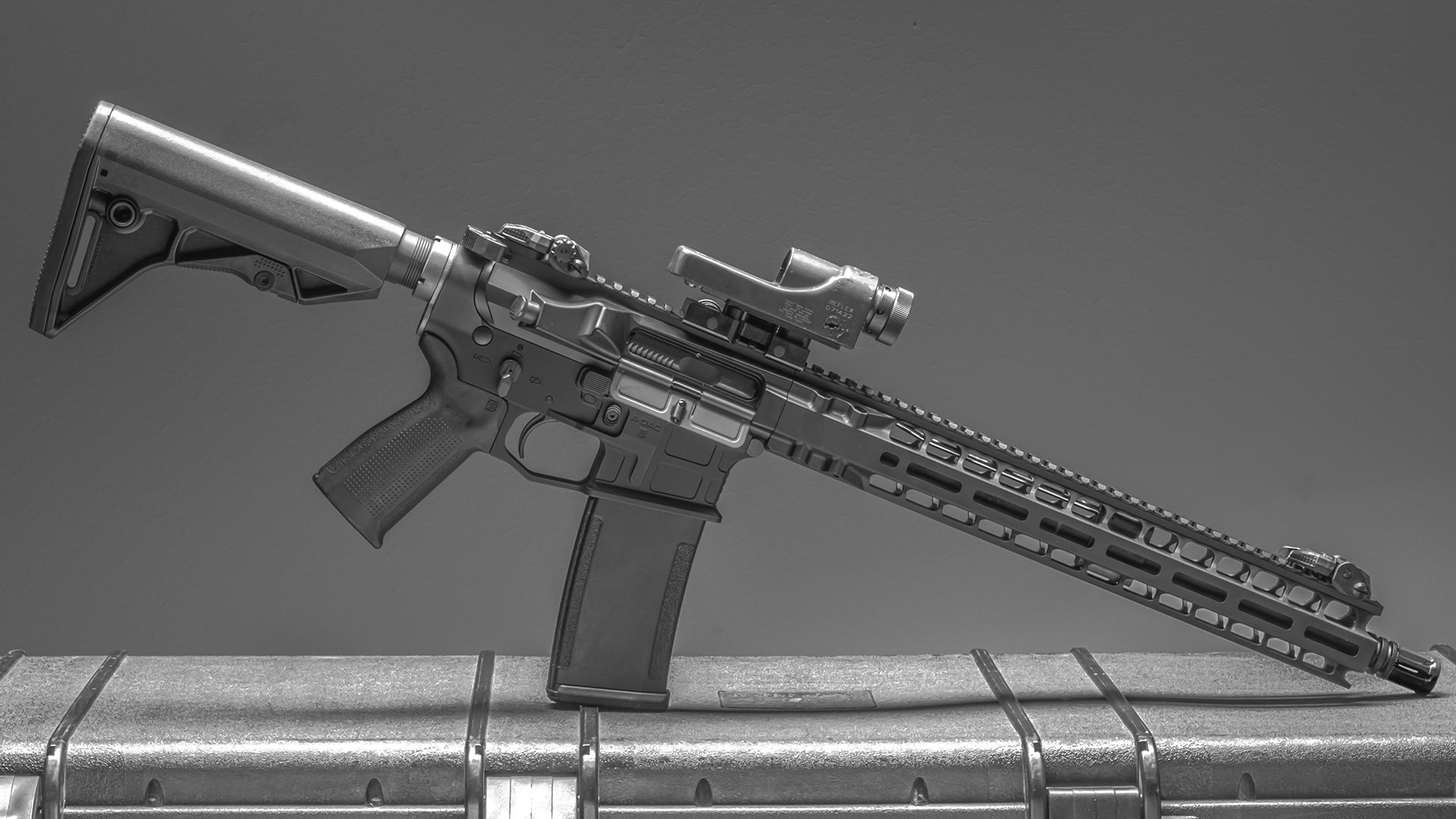
While gas side arms may be the most prevalent use of pressurized gas in powering an airsoft gun, Gas rifles have a cult following all their own. These epic rifles feature models with some of the most realistic actions of any airsoft gun on the market much like their smaller cousins in the hand gun world do.
You’ll find them in three main categories of gas: Green Gas, CO2, and HPA. While CO2 and Green Gas mimic the properties we discussed in the handgun section, HPA is the newcomer here. We’ll go into HPA guns a little later on in the guide, as they vary so differently that they deserve their own dedicated section, but it’s worth noting here that they exist. Within more traditional gas-in-magazine style rifles, you’ll find two key styles: Carbines and Sniper Rifles, the advice below applies to both.
What to Expect with Gas rifles
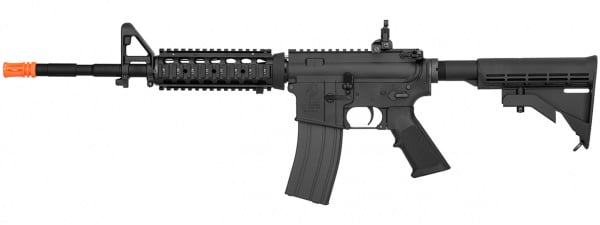
First and foremost, you need to be prepared for the awe inspiring realism these rifles are capable of outputting. Yes, electric recoil systems exist for AEGs, but they don’t hold a candle to gas blow back rifles (GBBR). Expect recoil from the carbine styles you’ve never experienced before. The bolt pull on the sniper rifles feels just like the real thing. This is a common aspect of almost any gas powered rifle however, and isn’t in itself an indicator of a quality gun.
All of that realism comes at a cost, so you should also expect higher maintenance costs. Whether that’s cost in terms of money and parts, or cost in terms of time spent cleaning and lubricating as preventative maintenance, you will see more maintenance costs. This is inherent in any system with as many violently moving parts as a GBBR, especially when you introduce dust and debris, so be prepared for this extra effort when you buy.
You also need to accept that there simply aren’t as many options in the gas rifle realm as there are for things like AEGS and handguns. This is a very niche part of the hobby, due in large part to the more maintenance heavy nature. That’s not to say there isn’t variety, because there most certainly exists enough variety to keep most players happy. There simply just isn’t the variety in manufacturers of these types of airsoft guns in the way you’d see it with electric rifles.
What to Look For With Gas Rifles
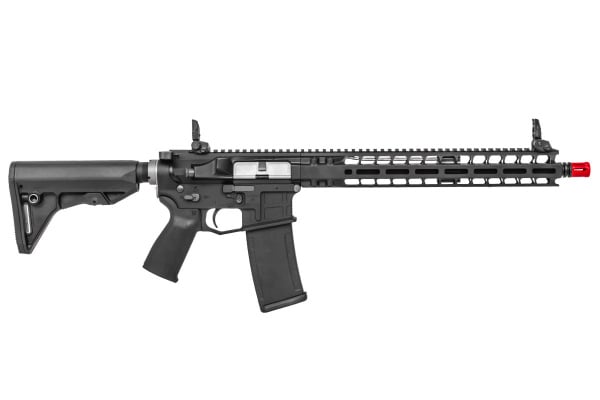
Now that we’ve covered what to expect, let’s shine a light on the things you’re definitely going to want in a gas rifle, starting with parts availability. With the overall market for rifles being less varied, so too are the parts. There are three main models for M4 that most players consider when shopping for GBBR, and they have parts available, but plenty of models do not. You would be wise to do some research into aftermarket parts like hop ups, barrels, and mechanical parts like the hammer and trigger systems to make sure you can acquire those if you ever need to in the future.
Along the same line as parts availability, magazine availability is a huge concern as well. Supply of proprietary magaziness for each type of gas rifle is much more limited, and due to the nature of how they are manufactured, they don’t tend to be cross compatible with other models. Each company has their own system for designing a gas rifle, and this means that they also have their own type of magazine. Much like parts availability, make sure you can buy six or seven magazines for the gun you have chosen, even if you don’t buy them all up front.
You also want to buy the most reliable gas gun you can find. There are some very sub par options on the market from companies who don’t understand gas guns enough to make quality rifles. While your browsing reviews and videos about any given gun, pay attention to any commonalities you find regarding parts life span, reliability or common issues. If the GBBR AK you are lusting over has a tendency to shave sears off and run away in full auto, you should probably pass. If the GBBR M4 you want has a tendency to shred buckings, you should be cautious. Make sure you are familiar with the regular maintenance before you buy too, as you’ll be doing a lot of it.
What To Avoid With Gas Guns
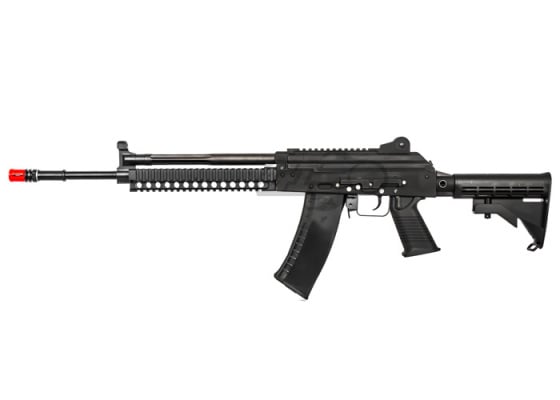
This is going to be exceptionally obvious if you’ve been paying attention, but stay away from the really cheap gas guns. Not only do they tick every box in the “things not to buy” categories we’ve mentioned before, but they simply aren’t made to a standard to handle the forces of gameplay. Most of these are meant to tease you into the GBBR deep end and buy an expensive rifle later. You can definitely come out on top with an entry level AEG, but there isn’t really a quality “entry level” market for gas rifles. This applies whether you want sniper rifles or a carbine.
Be wary of proprietary systems as well. Now, this is different from “every gas rifle is proprietary to its own system” like we talked about before, but with this point we mean stay away from guns that don’t have any aftermarket support. With gas rifles, it’s not “if” something breaks, it’s “when”. Whether they are easily available OEM parts or a plethora of upgrades, make sure support exists for the gun you’re buying, or it’s doomed to a life of being a wall-hanger eventually.
Lastly, you need to familiarize yourself with the maintenance procedures for the gun you’re going to buy. Now this is true of any airsoft gun, but it’s especially noteworthy with a gas rifle. Make sure you at least conceptually understand how to disassemble the gun and handle the basic preventative maintenance. Make sure you have the tools you’ll need or you know which ones you have to buy to service the gun, as it’s much more necessary with Gas airsoft guns than it is with an electric model.
Brands To Check Out
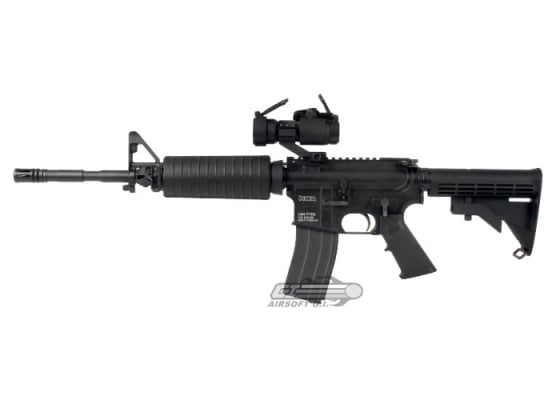
Gas rifles tend to have a more limited group of quality manufacturers to choose from, but one of the most prevalent is KWA. With the basic LM4 model, KWA changed the game completely, putting a solid rifle in player’s hands that didn’t need upgrades to handle field use. This LM4 system has found it’s way into guns from PTS and Elite Force as well, because it’s just that darn good!
Tokyo Marui’s new MWS system is also making waves as well. While they’ve only just recently begun really hitting dealers stateside, the lower power and higher level of quality make them ideal for the players wanting to run an aggressive GBBR set up in close quarters. Their accuracy and availability of parts makes them plenty suitable for building into a dominant milsim force as well.
WE Tech is one of the most prolific manufacturers of gas rifles we have on the market in 2024. Their closed bolt rifle paved the way, but the open bolt models they have been releasing for several years have a massive aftermarket of parts available. These may not be the best out of the box options we’ll recommend to you here, but you really can build them into very reliable machines, so we had to point it out.
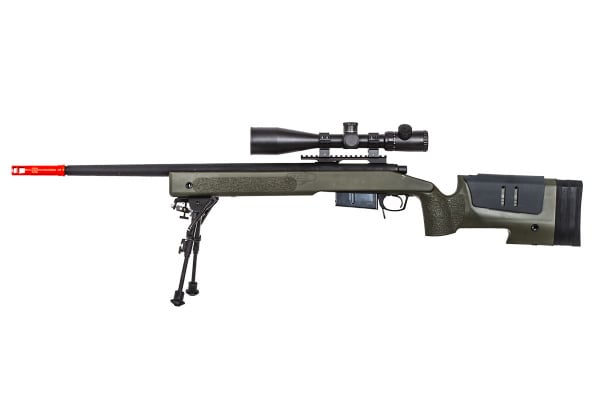
Our last recommendation in the rifle category isn’t for carbines, but for their sniper rifles, and that’s VFC. While they do manufacture gas carbines, most of them aren’t available in the states, but they put out a stellar M40A5 bolt action rifle that hits all of our marks for a quality gas sniper rifle that actually performs out on the field. Those carbines are no slouch too if they ever make it stateside.
Drop The Bolt And Let It Rip
Gas rifles can be some of the most immersive fun you can have in the airsoft hobby. The sheer realism and might recoil kick up your adrenaline with every shot. This comes with a high standard of care that your gun needs to keep running though. We’ve given you the tools in this guide to pick the best gun for your needs, and get you gas gunning right!
Chapter 3: Spring Guns (Coming Soon)
Chapter 4: Tactical Gear
What’s The Deal With Gear?
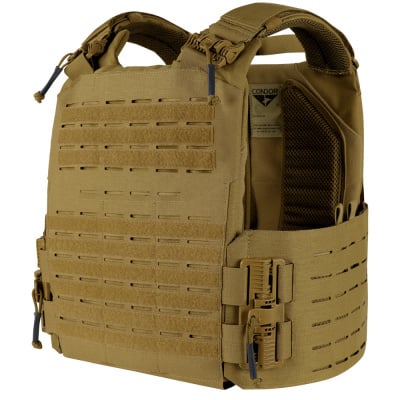
Tactical gear comes in many shapes, sizes and styles for every possible type of airsofter! We’ll get into specifics and things to consider when buying your load outs down below, but for now, let’s talk about why gear is important, and the purposes buying gear should serve.
Tactical gear first and foremost should be a performance enhancer, or in more tactical terms, a force multiplier. Yes, it looks cool, it makes the game more realistic, and can provide a bit of protection from BBs, but before you buy your first piece of gear, you need to ask yourself how it’s going to help make you a more effective player.
Some of these answers are obvious. A pouch to carry more ammo is generally a smart buy, but are you carrying enough ammo already? Could that space be better served holding something else? Does that vest give you the mobility you need to match your play style? Are you loaded down with too much stuff already?
These are the types of questions you want to be asking as you dive into the great endless gear ocean! Looking cool is awesome, but don’t sacrifice your ability to play and have fun, regardless of if you are a hardcore MILSIM bro or a super speedy CQB player.
Pouches and How To Buy Them
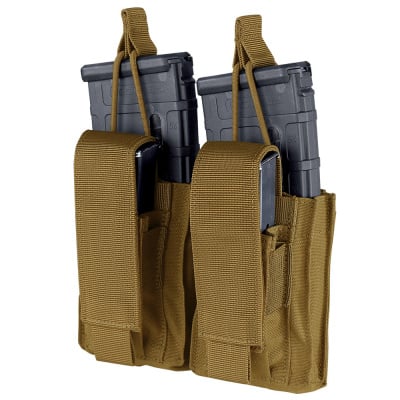
Pouches are the most self explanatory part of the tactical gear equation, and fairly ubiquitous regardless of play style, so it’s the perfect jumping off point. You likely already understand the basic concept of what the pouch does. It’s a bag that holds stuff that you can mount to your belt, chest rig, backpack or anything else you want.
As far as construction goes, buy things made from a quality level of nylon. This is measured in “Denier”, usually a number followed by a D (I.E. 1000D for 1000 Denier). This is a representation of the strength of the material used. While a higher Denier is more durable, it is also generally heavier, and more likely to trap heat, so the correct answer isn’t always to go for the biggest number, anything above 3-400D should be sufficient for most airsoft needs. Take a look at pictures as well and check for things like irregular stitching or frayed ends. These don’t always spell a death knell for your pouch, and can be handled, but if you see a common trend in a manufacturer, choose a different one.
There are pouches made for every kind of item, from magazine pouches to medkits, grenade pouches and phone pouches. This doesn’t mean you need to buy a specialized pouch however. I’ve always found that keeping a couple of more generic multipurpose “magazine” pouches on my vests allows me to easily change up what I carry, without spending a ton of effort on reconfiguring my vest. I use the Condor Universal magazine pouches, but there are other options based on your budget and preference. I’ve used these pouches to carry everything from grenades to a radio, and in a real dire pinch a sidearm before, and while not the most elegant solution, it gets the job done without having to pony up the cash for a more specialized offering.
Pouch placement is important as well. Keep that in mind when buying your pouches. If you can only fit three mag pouches across on the front of your vest, don’t try to just let a bit of extra hang off the side to squeeze a fourth mag pouch in. It never ends well, and you’ll tear or snag something at the worst possible time. Murphy’s Law guarantees it.
Be mindful of how much space you leave yourself for retrieving items from your pouches. All too often I’ve seen players stuff fully loaded storage pouches right above their magazine pouches or their holsters, and they cannot retrieve the items they need efficienctly. For this reason, I favor low profile admin pouches in the front, and make a point to stash a more spacious general purpose pouch on a belt or the back of my vest.
Lastly, before buying your pouches, take a quick inventory of the gear you carry in the field, and any gear you want to be able to have with you. You can make a quick sketch in a notebook or a list in your phone of what you need, where you need it, and what kind of pouches to buy to accomplish your goal. Go in with a plan, and you’ll get the things you need.
Plate Carriers versus Chest Rigs versus Tactical Vests

So we’ve covered pouches, and how to pick the right ones for you in pretty generic terms, because truthfully the market is so vast, and they all do the same thing, but when it comes to the things you mount those pouches to we need to be more specific. Not every type of upper body carrier or rig fits every play style, and there are some important features to look out for in your next set up, so let’s get into it.
There are three core types of upper body rigs, and everything out there is some kind of variation on the Plate carrier, Chest Rig, or Tac-vest in some way. These offer different levels of protection, storage space, and mobility to fit your play style and choosing the correct one is every bit as important as picking the right gun.
Plate carriers are one of the most common options, especially with MILSIM style players. They can come in many styles, from thick bulky options like the MOPC to the more lithe and nimble JPC style carriers. These styles of vest get their name from the ability to hold ballistic plates, which is what gives them bullet resistant capabilities. Now this isn’t a feature you need for airsoft, but many players like this option because it covers more of your torso from incoming fire.
Plate carriers often have more coverage for MOLLE space for pouches and accessories, and these are a popular option for players who value storage capacity over speed and mobility. Modern plate carriers get smaller and smaller though, so you can often find a happy medium. If you’re an aggressive assaulter style player, or find yourself in the mid range, these types of vests are great for carrying everything you need for extended engagements, and keep you a bit safer from incoming BBs.
Chest rigs are on the polar opposite end of the spectrum. These types of carrier are typically small MOLLE panels or prefabricated sets of pouches with some straps to retain them to your torso. They provide very minimal protection and storage, but favor mobility the most. These types of set up are great for players of non-standard body types, capable of fitting very small players or sizing out for those of us larger players. If you paid attention at the beginning of the guide, you’ll see that I favor a chest rig myself as a larger guy.
These types of setup serve players who want tons of mobility, or don’t want to trap a ton of heat on their person as they play. The heat mitigation is my primary reason for using one, but I can’t deny the benefits of not weighing down my already slow body any more than I have to while I play. SpeedQB players will often use the most minimal chest rigs for the movement benefits as well. They can be versatile, so long as you choose one that has the storage you need.
The last style is the tactical vest. This style of vest is the type with a zipper up the front, and you put it on like a jacket. While these have fallen out of favor in the modern day, they still make a common appearance with new players. We’ve all seen the rental players running around in a crossdraw vest getting picked off by the more experienced players before.
These vests are popular if only for their often low cost. They can be exceptionally convenient for donning and doffing, but often don’t do anything a chest or a plate carrier wouldn’t do better. However, you cannot deny the ease of use and cheap cost that makes them a great buy for new players, especially those on a budget. At the end of the day, they’ll hold your kit, and get you playing, but we would encourage you to look at the other options.
There are as many brands as there are different models of rig on the market, but here’s a few that we like.
Plate Carriers
- Condor MOPC Plate Carrier
- Defcon Low Profile Plate Carrier
- Condor Vanquish Plate Carrier
- Lancer Tactical Buckle Up Plate Carrier
Chest Rigs
- Emerson Low Profile Chest Rig
- Lancer Tactical Adaptive Sniper Chest Rig
- Condor Ronin Chest Rig
- Gryffon Golem Chest Rig
Tactical Vests
- VISM MOLLE/PALS Vest
- Lancer Tactical Crossdraw Vest w/ Holster
- Condor Modular Chest Set
- Condor Mesh Hydration Vest
At the end of the day, it’s just like picking anything else for your kit. You need to look at the pros and cons of each feature, and choose the one that fits your style. If you are a more mobile player, we’d recommend the chest rigs, and if you tend to be the anchor for your team to pivot around, a plate carrier loaded with enough ammo to sustain the enemy’s attention is the play. We’ve got options for every budget, and there’s no reason to avoid the less expensive choices as you learn what you like. In fact, we’d recommend picking up a few different options for different weather situations. I love my chest rig, but when it’s cold or it’s going to be a long walk to the car, I’ll hook my chest rig up to my plate carrier via the QD buckles to increase my storage options and stay a bit warmer. If you’ve got options, you can adapt to any mission set, so don’t be afraid to stockpile a little extra nylon.
Belts and Leg Panels: The Gear Down Under
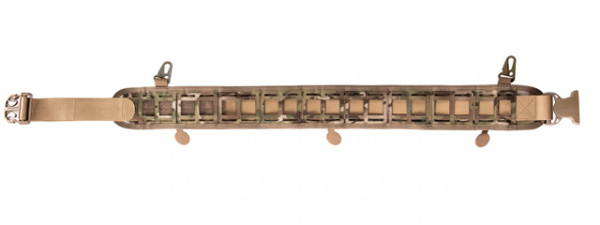
Tactical gear doesn’t just have to be worn above the waist. Many players choose to supplement their chest rig or plate carrier with a tactical belt or thigh rig. Some players use these types of rigs exclusively to keep their upper body free of any movement restrictions or to alleviate back and neck pain.
You can go through the intricacies of a battle belt, but they all essentially serve the same purpose, though they can achieve that goal through different means. Battle belts primary purpose is to allow you to store gear of varying types around your waistline, so you don’t turn into the tactical stay-puft marshmallow man by cramming too much on your vest.
Within the battle belt category, you can buy one-and-done set ups like the Condor LCS gun belts. These belts are ready to go out of the box, and you simply attach your pouches and go. You can also purchase two-piece systems, where a Velcro lined inner belt that runs through your belt loops, and then attaches to the actual battlebelt to help it stay in place. Condor even sells an inner belt that allows you to convert the LCS belt. I’ve been playing in the LCS belt for most of 2024, and for the price, it’s very hard to beat, as it’s adjustable for size, that adjustment doesn’t slip, and you have plenty of versatility to mount things like holsters that don’t attach with MOLLE as well.
You also have the option of more traditional two part battle belts, where you take a rigid gun belt, and slip a MOLLE sleeve over it. This is similar to the High Speed Gear belt, or Condor’s older style of battle belts, and likely are the type you are most familiar with. This tech is old, and hasn’t changed much, but that’s because it works. Combined with a set of suspenders, this type of rig can be your primary rig very easily, allowing your body to breathe.
Moving further down from belts, we get to thigh rigs. These types of equipment serve the same purpose as a battlebelt, but lower the gear yet another distance further. While these are slowly falling out of favor for most players, due to the restrictions they can place on movement, and their falling out of favor in military service around the world, you still see them from time to time, especially for pistol holsters. You can buy plain MOLLE panels like the ones from Lancer Tactical, or go for something more dedicated like HSGI’s thigh rigs where they incorporate mag pouches directly. Condor offers plenty of holster options this way as well, like their Tornado holster, to allow you to shift your sidearm lower if that’s your preference.
Once you’ve chosen your type of belt or leg rig, it’s a matter of picking the type of pouches and gear you want to outfit. The obvious choice here is a holster on your dominant side, and magazines on your offhand side for that side arm, but there are other things you may want.
Consider a dump pouch, general purpose pouch for storage, and some kind of small GP or IFAK pouch to keep any faux medical supplies you may need for a game (or actual med gear if that’s your thing and you know how to use it). My belts generally include at least 2 or 3 side arm magazines, two rifle magazines for my primary, a small dump pouch, and a sidearm, and I’ll fill out the remainder of space with general purpose storage either for medical equipment or things to keep my guns running, like a small bag of bbs or a spare battery (and snacks, don’t forget the snacks!).
Ultimately, the goal with using a belt is just to make sure that you have the essentials on you, for when you don’t have your vest, or you need to remove it. Many players choose to ignore the belt entirely, so it is by no means a requirement, but it can help step up your gameplay and give you more tools to get through a scenario.
Hydration Systems To Beat The Heat
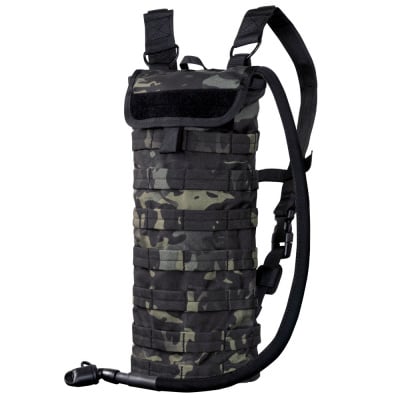
Airsoft is a very physically intense game to be playing. It goes without saying that being so active is going to make you sweaty, and that’s going to cause you to get dehydrated. While you should be starting a hydration regimen days before you play at a minimum, you need to replenish those fluids as you play. This will help you fight fatigue, muscle aches, and go a long way to preventing the dreaded heat exhaustion we’ve all seen happen to our fellow players.
There are some simple steps you can take without buying anything, keep a bottle of water in a spare magazine pouch, and bring some water with you to the field to drink between scenarios. Lay off the pre-workout and the energy drinks too. They may seem like they help, but all that extra sodium is going to make you crash much harder in the heat than usual.
With the simple stuff out of the way, there are some more industrious options you can purchase and add to your kit that we highly recommend, starting with the hydration bladder and a pouch to hold it. The bladder is a simple enough idea, it’s a bag with a hose that holds water. You can get them from companies like Condor, WoSport, and Lancer Tactical. The bag is where you get a bunch more options. You can get a simple offering like Condor’s basic Hydration pouch. There are small MAP packs like the ones on offer from Lancer Tactical or TMC. My new go-to however, is the back panels from WST. This back panel is sleek, slick, and holds a bladder, spare mags, and other tools in the GP. This is just a more condensed map pack, and is my new go to.
Outside of the back mounted pouch, you can also look into a larger water bottle, and a pouch to carry it. This is where those GP pouches we talked about earlier come in handy, though Condor offers their H2O pouch, and a 32 oz insulated bottle that you can combine to keep water on your person if the bladder isn’t your thing.
For those of you wanting something on the back of your body, but don’t have a vest that can mount it, or happen to be running a chest rig, there are stand alone hydration backpacks, and many backpacks from companies like Condor, Lancer Tactical, and TMC have dedicated space for bladders to be stored, or for you to carry water bottles or canteens.
However you decide to do it, making sure you stay hydrated during a game is an important part of engaging in the airsoft hobby safely. Your friends don’t want to drag you to the safe zone, you don’t want to pay the hospital bills, and the better you feel while you play is only going to increase your on-the-field enjoyment. Stay safe and stay hydrated.
Clothing and Boots to Literally Cover Your Six
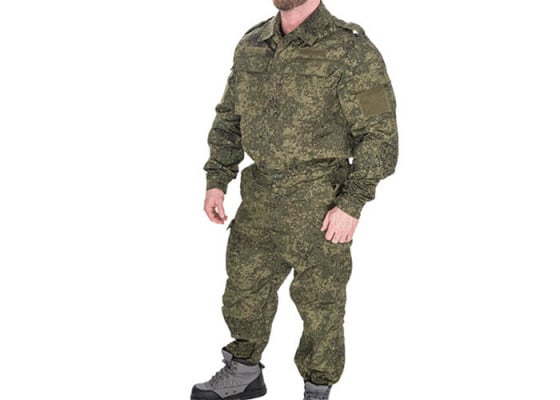
Up to now, we’ve covered a lot of the ancillary gear you’ll want to start playing. Many new players understand the validity of buying at least some load bearing equipment to play, but what about what you’re wearing underneath? Your clothing and boots are also an important part of your kit when you play airsoft, whether you play indoor or outdoor.
Do you need to buy fancy high dollar Special Forces grade camo sets and the nicest pair of boots on earth? No.
Should you still put some thought into what you wear to a game for comfort and performance? Yes.
We’ll start from the ground up with boots. While you may be able to skate by your first few games in your sneakers you wear everyday, eventually you’ll want to consider some dedicated footwear. Regardless of your environment, you want to make sure your ankles are protected. Your feet are doing a lot of complex motion while you navigate an airsoft match, and even the smallest slip-up can have catastrophic results.
For outdoor play, we recommend a nice tall boot with heavy ankle support. Outdoor fields simply aren’t as safe in terms of the environment you move around in, and that’s part of what makes them fun, but you have to be cognizant. A solid durable tread, and either a composite or a steel toe can be very helpful to navigate an outdoor environment. We carry some excellent options from Condor Outdoor that cover these needs, if you want a great starting point.
For indoor play, sneakers can get you by, and have their benefits, but typically at the cost of ankle support. Here, we recommend a lower profile boot, and realistically, you don’t need a steel toe if you feel it will slow you down. Speed and agility are going to be the key points to look for. VISM makes a great low height Oryx boot for those of you wanting something more rugged that can even get the job done if you transition between indoor and outdoor.
For clothing, again environment is a factor. You can get by with jeans and a t-shirt in either situation, but if you want to specialize your kit a bit more, you’ll want to start looking at more tactical clothing options.
Much of the clothing equation is personal preference and body comfort, so it will do you a lot of good to ask your local players what they like for the fields you are playing at. Outdoor players will want to consider camouflage patterns not necessarily for hiding, but to easily identify friend from foe. Indoor players can afford to be a bit flashier, since arm bands and other marking devices will typically identify you to your teammates.
As far as features to look for, you’ll want loose fitting clothing that provides a large degree of movement. That’s the most important thing, and you can build extra features on from there. Adding integrated pads can be very helpful especially in indoor situations, as they allow for those deft knee slides that allow you to get the drop on your opponent. They can protect you outdoor from rocks and small obstacles, but they do get hot, and aren’t ideal for every climate.
If you want quality camouflage pants, take a look at the offerings from Lancer Tactical, Emerson, and TMC. These pants come in a variety of patterns and feature sets, and even price points to fit any budget. The shirts all accomplish the same end, but visually distinct styles can help you complete the look, and they all serve to help keep you cool.
Not everyone wants camo colors and Navy SEAL aesthetics, and for those of you looking for a more performance oriented civilian style, Condor’s new line of pants that have been releasing in 204 have been phenomenal for players looking for flat colors. I’ve personally been getting a ton of mileage out of the Cypher pants and the Paladin pants since they released, and while their combat tops fit a little tighter than I prefer, they are built well and ideal for guys who want movement range, but don’t want the baggy look.
Consider ditching the skinny jeans and hoodies, and give yourself a leg up on the field. You’ll be more comfortable, more mobile, and looking cool is half the fun!
Helmets Versus Hats
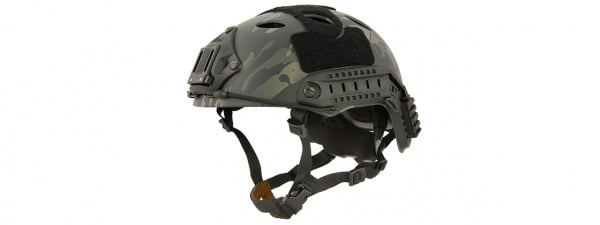
We’ve covered vests. We’ve covered pouches. We’ve covered clothing. Until now, we’ve stayed below the neck, and it’s time to cover the cover you wear on your head.
Everyone has a different preference when we start talking about headwear. Helmets provide protection, but every other type of head covering is generally more comfortable while you play. Which one is best?
Ultimately, there is not best answer. Like everything else we’ve discussed in this guide, it’s about what is best for you. That doesn’t mean we don’t have some advice to look at while you buy.
Let’s start with hats. Ballcaps, Boonie hats, and beanies abound, and which one you choose is going to vary wildly depending on the look you want or the environment. Tons of options exist from companies like Lancer Tactical, Condor and others, and you can do whatever you like without any real ill effects. Be mindful of the type of eye and face protection you are wearing, and how your rifle is set up though, as some hats can interfere with goggles or scopes, and while an easy thing to fix, it’s annoying.
Then we get on to helmets. Helmets are a much more complex style of headwear to discuss, because not everyone wears a helmet as a course of daily life. Helmets are certainly less comfortable than a hat, and take some adjustment to get used to wearing, but they provide some great benefits as well. First and foremost, they make a much better shield against incoming BBs than a hat does. If you buy a quality helmet, they can help with the occasional slip and fall. I have a great story from a local player about how a helmet saved him playing at a MOUT site when he took a big fall and smashed the back of his head on a rock that would have otherwise caused a pretty severe if not fatal injury.
The tradeoff is that helmets can get VERY hot. They also add a lot of weight your neck isn’t used to, and that can be fatiguing. While I do own and use a helmet myself, I don’t wear one all the time because of the heat issue. My decision to wear one is frequently a byproduct of the environment I’m playing in. If it’s required for the facility im at, or I run a big risk of whacking my skull on doorways and other obstacles, it’s going on my head, but otherwise, I’ll favor a hat.
Now helmets have ancillary benefits if you choose to wear them and purchase the right models. Many modern helmets like the PTS MTEK Flux that I wear, have some kind of rail system on the side that allows you to attach things like comms gear, lights, or even goggles and facemasks. The Night vision mount can be used for night vision, or even mounting a GoPro so you can film your games! These are the primary reasons I’d recommend wearing a helmet.
When buying one for yourself, make sure you get a size and style that fits your head well. Bravo and Lancer Tactical both make some fantastic affordable helmets great for players with normal sized heads, or smaller craniums. If you’re like me and you have a huge head, the PTS Flux helmet has a more unique system for adjusting fitment that makes it ideal for heads of all sizes, though that quality and versatility comes at a cost.
For most players, I’d say pick up a helmet. Whether or not you wear it all the time is going to be up to you, but it’s a handy tool to have around. I’m a huge fan of my own personal bucket, even if I don’t use it at every game. I have it as an option in my gear bag for games when I need it, and I have a hat I can wear, or I can choose to go cover-less if I choose as well based on the situation.
Holsters for your Handguns
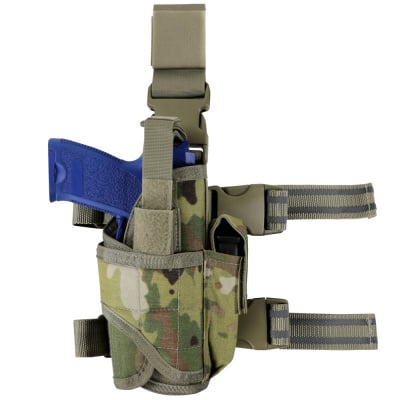
We touched on drop leg holsters a bit earlier, but there are far more options available to you for carrying your preferred pistol into battle. Whether hip mounted or drop leg, or even mounted to your vest, there are two steps you’ll want to keep in mind.
Step 1: Make sure it fits. The obvious point is that your pistol holster needs to be big enough to contain whatever hand gun you are carrying, but you also need to make sure it’s not too big as well. This is most easily solved by purchasing either an adjustable holster like the Tornado styles from Condor and Lancer Tactical, or by purchasing a fitted kydex or plastic holster like one from Amomax or Cytac.
Step 2: Make sure it can be mounted in a comfortable position. Amomax, Cytac, Blackhawk and other popular fitted holsters usually come with a bevy of aftermarket mounts you can buy. These mounts allow you to attach directly to your vest, on a battle belt, or even a drop leg panel purpose built for your holster. Nylon holsters generally don’t have this level of flexibility, but they are often available in either belt, molle, or drop leg configurations. Options like the Condor HT and VT give you directional options, while a mount like the kind available for Amomax holsters will allow you to rotate your pistol to any angle of cant, you just have to buy a more specific holster for your pistol.
As far as preferences go, I tend to favor plastic and kydex holsters personally. I have plenty of use for the nylon stuff however. I find those tornado holsters I had when I started simply didn’t retain the gun in the exact same spot, and the more experience I gained, the more I noticed a few millimeters of difference in where my pistol shifted. A quality mount with a quality holster alleviates all of these problems.
Ultimately, this comes down to budget and what you can afford. A Hard-shell holster is best, but the tornado is a quality budget conscious option. Whatever you do, quit using those floppy cheap holsters from the sporting goods store. You invest a lot of money in your airsoft guns, and you should holster them in something that will protect your investment.
Putting the Pro in Eye-Pro
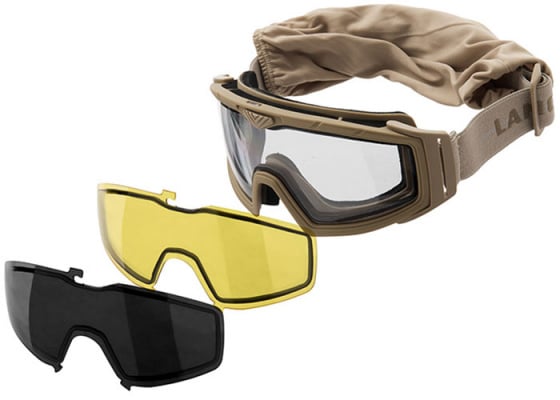
If there is one piece of gear we can recommend dropping some extra cash on, it is the eye protection you wear, and any face protection you pair with it. You only get one set of eyes. Since we haven’t figured out that Minority Report-esque eye replacement surgery just yet, do yourself a favor and spend the extra coin for something nice.
When buying your eye protection, there are some preferences you need to consider.
- Do you wear glasses?
- Do you use a scope with short eye relief?
- Do you want lower face protection?
- How much ventilation do you need?
On top of those preferences questions you need to answer, there are some safety concerns when you choose eye protection as well such as:
- What are your local field requirements?
- Are your goggles impact rated?
- Are they full seal?
- Do they impede your face protection from working?
The obvious answer to all of these issues is to buy a high quality full face mask, like the kind you would use to play paintball. There’s nothing wrong with using this as your eye protection, despite what the MILSIM heads may tell you. You can’t overstate the confidence factor of complete head coverage in high intensity situations, and they tend to play the best with glasses and fight fog well when you buy a quality option.
For full face masks, we recommend the ones from DYE, Push Paintball, and Valken, depending on your budget or required features. They all fit most players, fight fog pretty well, and look pretty slick.
If you don’t want to go full face, that’s ok too! While I absolutely use a full face mask when I play indoors, I prefer goggles and a lower mesh mask for indoor play for a few reasons. The first of those is comfort in the heat. I can remove the mesh when Im out of the action and cool down and get a drink of water. The second is because I prefer lower profile eye protection, and full face masks can feel like they stand a mile off your face, which for me personally isn’t comfortable.
My preferences lean into a low profile goggle like the Valken ZULU, combined with a mesh mask like one from Bravo. If you wear glasses, you can sub out the ZULU’s for something like the Lancer Aero line of goggles, as they provide excellent fog defense, look awesome, and are still pretty comfortable. They really only become a hindrance if you’re a sniper and you have a cheaper scope with minimal eye relief.
We mentioned mesh masks earlier, and these are essential part of running a goggle based set up. While the individual options on the market are all fairly similar, whether you buy a Lancer Mesh mask or a Bravo one, you have some options. You can go as small or large as you’d like, with or without eye protection, and some have fabric sides with mesh only covering your nose and teeth, which is what I play in. Whichever one you choose, just make sure you use one when you play. Dental bills get expensive, and getting your teeth shot out is a great way to take all the fun out of a day at the airsoft field.
Things To Get Your Gear To The Field
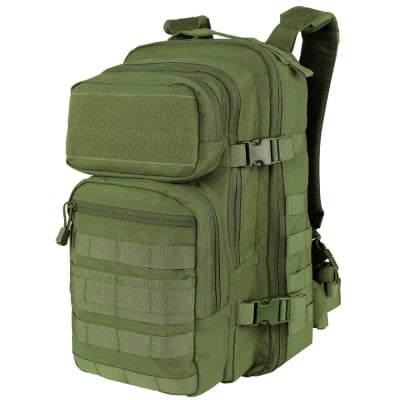
We’ve covered all the gear you could ever possibly need to get you playing, but how do you get it all there?
For that you are going to need some bags. Whether you get a back pack for your kit, or a rifle bag for your guns or one bag that holds them all, proper storage is a key part of ownership for all of your gear, both to prevent legal issues and keep it safe.
Backpacks can serve other purposes as well, functioning as a hydration pack, or on the field storage, especially for players with more low profile set ups trying to stay in the field longer.
Personally, I’m a bit of a bag fanatic. I have bags for using in game, bags for storage to and from the game, and larger bags to hold those bags and keep them sorted in my garage. I find they generally fall into three categories: Game Use, Small transport, and Larger transport situations.
For game use, you’ll want to check out things like Assault Packs from Condor, or MOLLE backpacks like the kinds you can buy from Lancer Tactical or TMC. These packs are smaller, don’t add a ton of size to your profile on the field, and only store the essentials. These are great for field use. You can leave them at the FOB, or wear them as you play and they won’t weigh you down. I have a couple different options I fluctuate between, but my favorite is the classic Condor Compact Assault pack for this use. It gets a ton of mileage when I wear a chest rig to larger MILSIM events, as I can remove it when we set up a position, and easily take it with me when it’s time to move.
Small transport is going to feel pretty similar to field use bags, just bigger. I separate these because their primary function tends to lean more towards transportation of gear than on the field use. These kinds of bags are items like the Condor 3-Day assault pack or the VISM 3013 bag. These larger bags are awesome for keeping a spare chest rig, or extra bbs and tools with you as you go to a game. They can even be very useful for larger milsim events, splitting the difference between a small assault bag and a proper rucksack. I’ve used these at American Milsim events to be a dedicated heavy weapons bag, storing all of our ammunition and launcher so we could easily transport the extra gear. I’ve also used the 3 Day pack as a handy storage device for my large collection of magazines, bb’s, and modular chest rigs, so when I bring different styles of games, I always have the pieces I need to change up my kit.
I also lump thins like rifle bags and gun cases into this category as well. Rifle bags are essential, as you don’t want to just have your guns loose in the car as you travel or transport from your house to the car for safety. Since these bags are generally storage related, but very specific in what they store, they don’t meet the criteria for Large Transport bags, which we’ll cover later. Condor, VISM, and Lancer Tactical all make amazing soft bags for carrying guns, and you’ll find a quality selection of hard cases as well on Airsoft GI. No matter which option you choose, make sure it will fit your gun and any gear you want to keep with it. I try to keep a few magazines, any relevant accessories like slings and optics, and batteries with my AEG’s for example.
Our last category of bags is the Large Transport bags. These are things like full kit bags designed to hold every single item you need. I used a large load out bag from London Bridge Trading for the longest time, after getting an unreasonable deal at a surplus store, but bags like this are honestly too big for regular use. I’ve recently switched to the Laylax Container, as it functions in a similar way to that old LBT bag, but in a more modular compact package I can honestly use significantly easier.
The Laylax bag is great because it exemplifies everything you could ever want in the Large Storage game, but other options exist too. The Lancer Tactical Nylon Rifle backpack is a smaller option, capable of carrying your gun and your kit, while more broad base options like the Condor Colossus duffle bag also give you the ability to carry guns, gear and everything else you could ever need to a game. This is the defining trait of the Large Transport category, that ability to carry every thing.
Now, I’ve given you some of my personal picks, but I think the best plan is to find the mix that works for you. I have a TON of gear, and that may not be the case for you. You could also have even more gear than I own, and that’s ok. Take a look at how much gear you own, and how much space you have to store it in. Consider how easy it is to get that gear from your residence to the field, and access all of it once you are there. I picked the bags I did because they fit neatly in the trunk of my SUV, and I can quickly access the items I need without stressing over where it all ended up. If you’ve only got one or two rifles and a small assortment of tactical gear, you may only need a double rifle bag and a backpack. I use those too, but store all of my kit at home in larger bags because that’s what works for me. There are no wrong answers here, just find the solution that works for you.
Get Geared Up
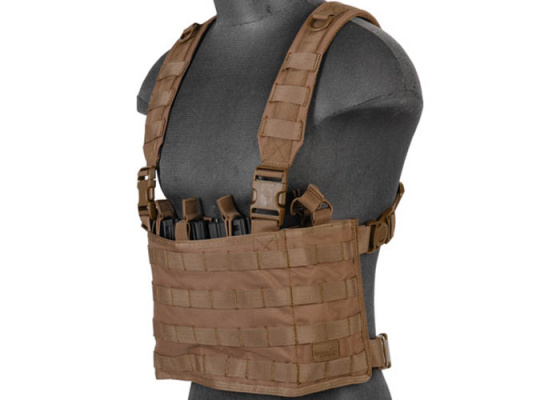
We’ve given you the tools you need to pick out the gear you require. This is easily the deepest rabbit hole to get down in the airsoft hobby, short of upgrades for your guns. Take a deep breath, take some notes, and be really analytical about your needs and preferences.
Most importantly, don’t be afraid to talk to other players at your local field that first time you go to rent a gun and try it out. Airsofters love to talk about their favorite pieces of kit, and always have a good story about that one time that very specific type of pouch was the difference between victory and defeat. Ask if you can try things on, or why that player picked the items they wear.
Start small, and grow your collection over time. You don’t need everything all at once. Get a good pair of goggles or a full face mask, and then pick up a quick chest rig like the Gryffon Golem or a Lancer Tactical option and start playing. As you find your needs change, add more kit to your collection. You’ll find the solution that works for you over time.
Copyright © 2025 Airsoft GI
All airsoft guns are required to have the tip (1/4 inch) of the barrel permanently colored in blaze orange. No person may openly display or expose any imitation firearm (replica firearm), in a public place. The term "public place" means an area open to the public or exposed to public view and includes streets, sidewalks, bridges, alleys, plazas, parks, driveways, parking lots, automobiles, whether moving or not, and buildings open to the general public, including those that serve food or drink, or provide entertainment, and the doorways and entrances to buildings or dwellings and the grounds enclosing them.
Any person who changes, alters, removes, or obliterates any coloration or markings that are required for by any applicable state or federal law or regulation, for any imitation firearm (replica firearm), or device in any way that makes the imitation firearm (replica firearm) or device look more like a firearm is guilty of violating the state or federal law.
By accessing the Site, you certify that you are older than 18 years of age or the age of majority where you live, whichever is older; that you are the owner of any credit card used to purchase on items on the Site; that you are familiar with all local laws in your area affecting your legal right to access airsoft products; that any products you buy are for your own private enjoyment and that you will NEVER share these products with a minor in ANY WAY.








